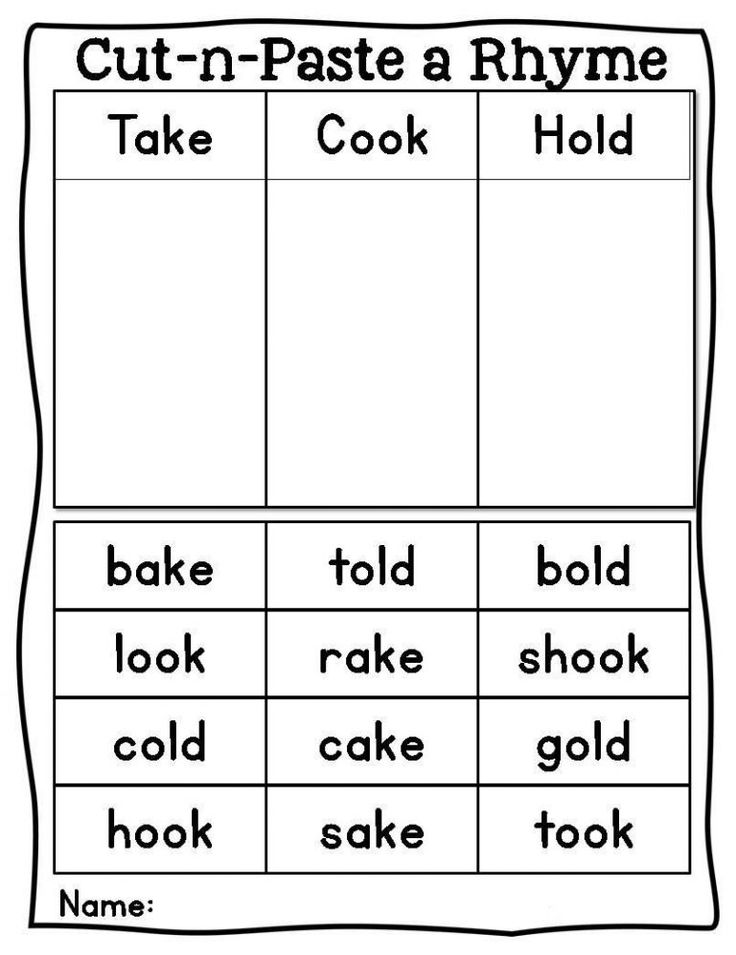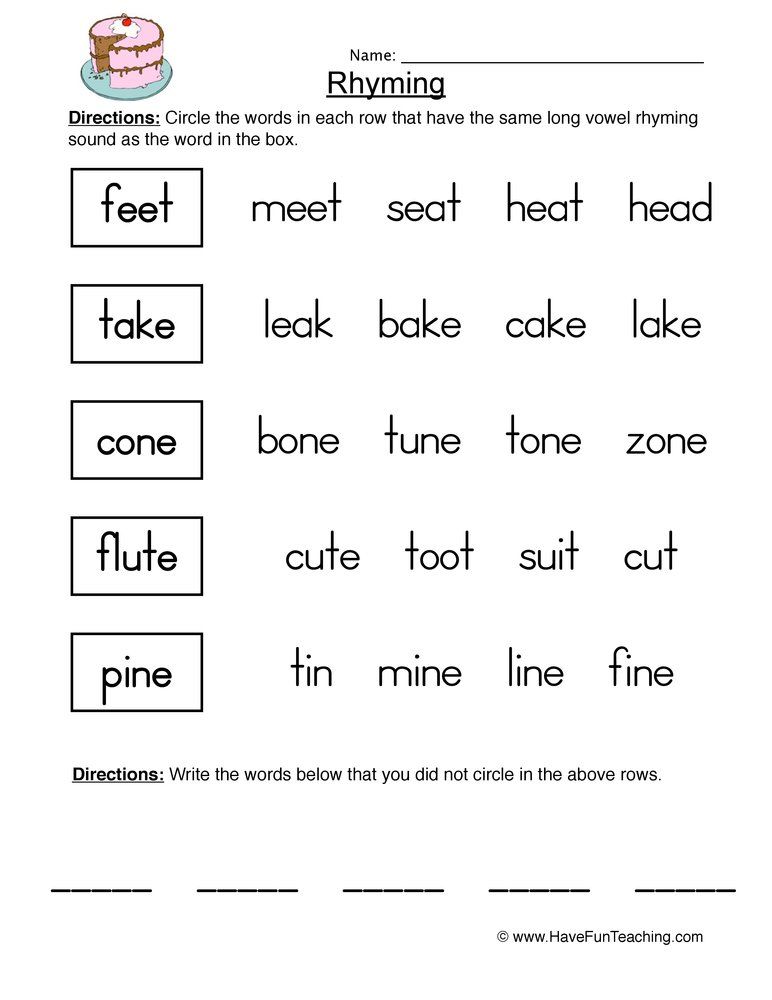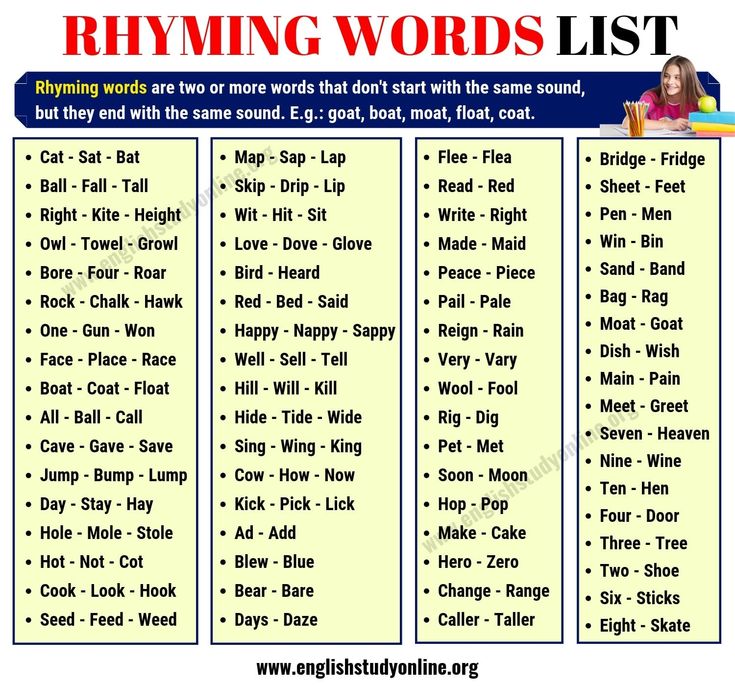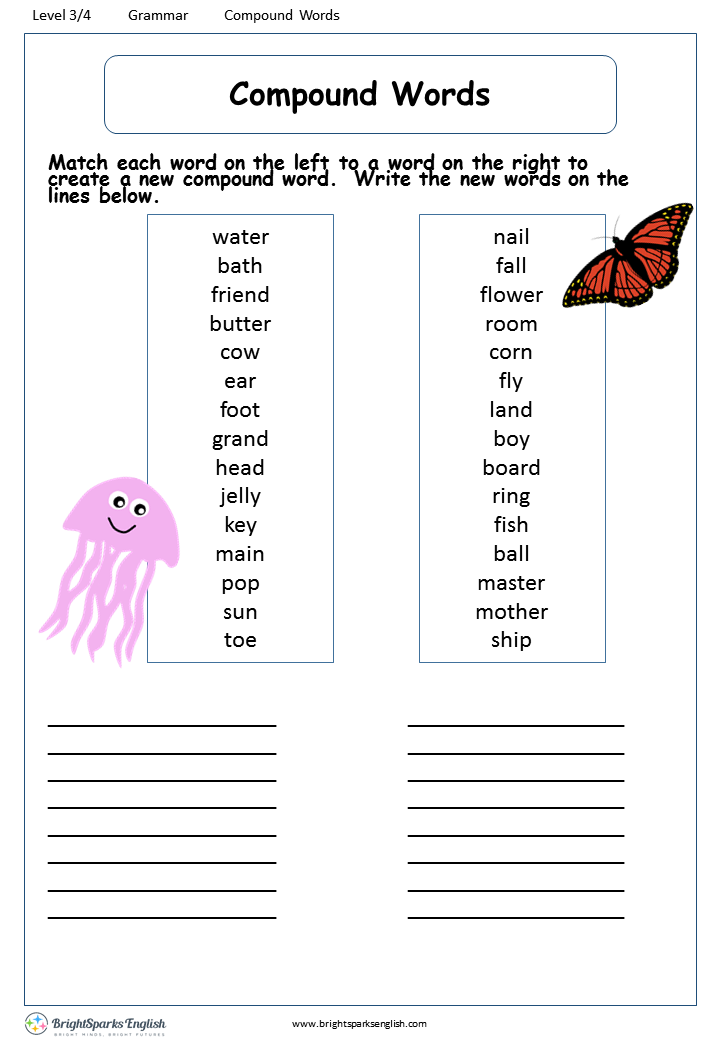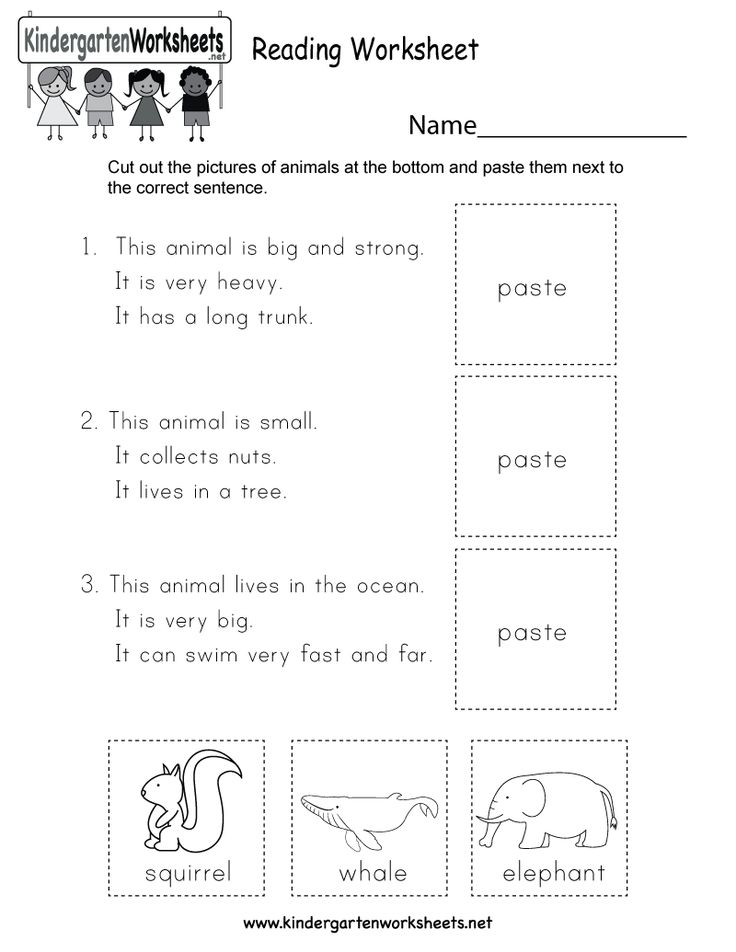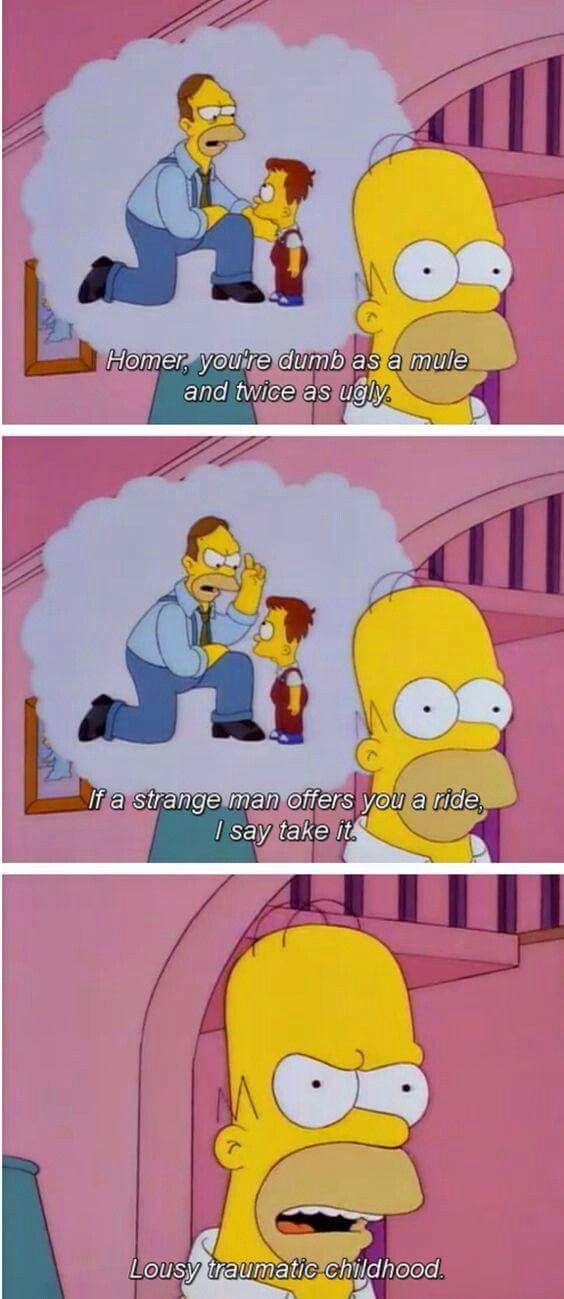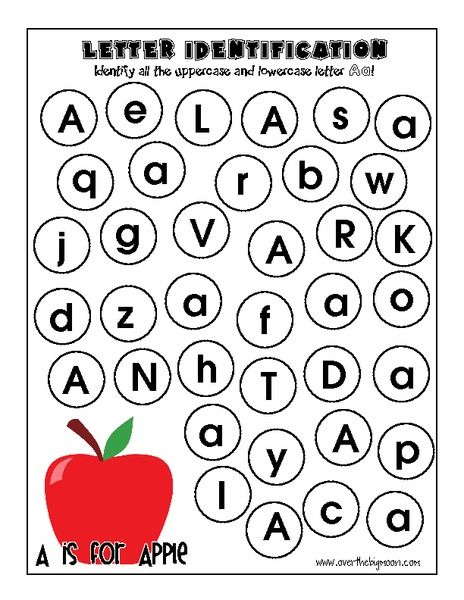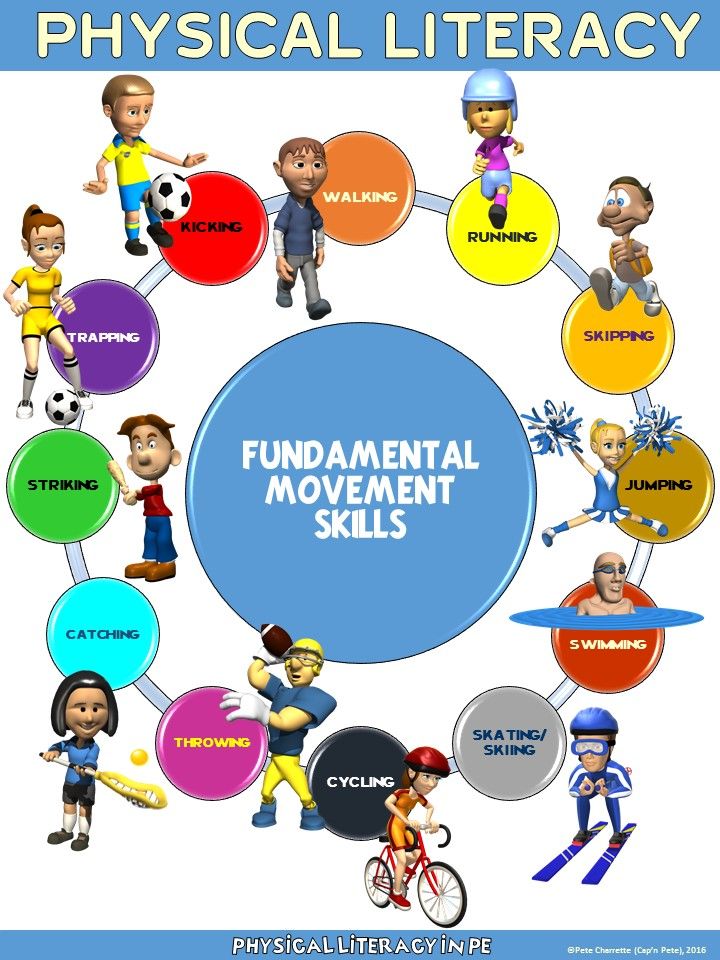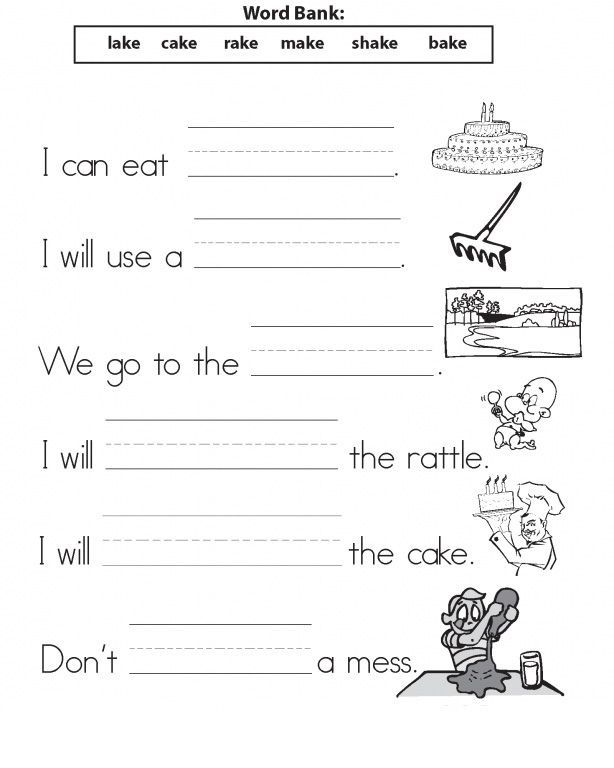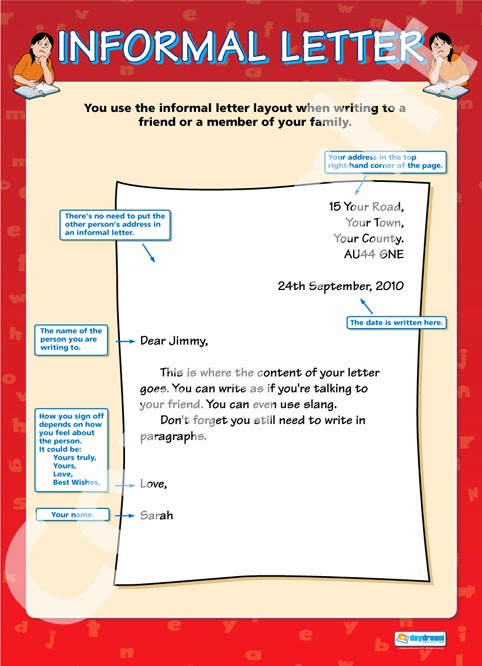Learning rhyming words
231 best rhymes for 'learning'
1 syllable
- Thing
- Swing
- Sing
- Spring
- Ring
- Sting
- Bring
- King
- String
- Ng
- Ding
- Wing
- Ting
- Ping
- Sling
- Cling
- Ching
- Thin
- Pin
- Spin
- Fling
- Win
- Sin
- Grin
- Twin
- Min
- Bing
- Been
- Skin
- Chin
- Gin
- In
- Kin
- Din
- Swim
- Grim
2 syllables
- Turning
- Burning
- Serving
- Hurting
- Working
- Searching
- Lurking
- Earning
- Cursing
- Yearning
- Bursting
- Flirting
- Churning
- Burnin'
- Jerking
- Turnin'
- Surfing
- Circling
- Virgin
- Stirring
- Counting
- Wanting
- Spinning
- Drowning
- Winning
- Lightning
- Morning
- Listening
- Warning
- Meaning
- Running
- Shining
- Planning
- Raining
- Sinning
- Stopping
- Whipping
- Rhyming
- Slipping
- Stepping
- Helping
- Moving
- Starving
- Bringing
- Loving
- Driving
- Jumping
- Climbing
- Dreaming
- Coming
- Dropping
- Leaving
- Swimming
- Flipping
- Shopping
- Claiming
- Aiming
- Rapping
- Keeping
- Hanging
- Bumping
- Hoping
- Living
- Sipping
- Popping
- Banging
- Giving
- Saving
- Ripping
- Dripping
- Sleeping
- Swinging
- Tripping
- Something
- Screaming
- Nothing
- Having
- Singing
- Creeping
- Evening
- Cleaning
- Raping
- Hurtin'
- Fighting
- Eating
- Blasting
- Pouring
- Stressing
- Lighting
- Raising
- Pushing
- Passing
- Acting
- Staring
- Sitting
- Starting
- Putting
- Losing
- Letting
- Smashing
- Pissing
- Waiting
- Writing
- Testing
- Dissing
- Painting
- Spitting
- Cruising
- Facing
- Wasting
- Cutting
- Hearing
- Setting
- Causing
- Beating
- Sharing
- Shouting
- Crashing
- Hunting
- Rising
- Kissing
- Dancing
- During
- Cheating
- Closing
- Wishing
- Tearing
- Blazing
- Floating
- Chasing
- Meeting
- Flashing
- Racing
- Messing
- Hitting
- Caring
- Wearing
- Biting
- Hating
- Blessing
- Boring
- Guessing
- Missing
- Getting
- Shooting
- Busting
- Using
- Loosing
- Leaning
3 syllables
- Firing
- Suffering
- Murdering
- Wondering
- Entering
- Returning
- Wandering
- Covering
- Disturbing
- Observing
- Gathering
- Offering
- Deserving
- Whispering
- Shattering
- Pondering
- Bothering
- Slaughtering
- Shivering
- Conquering
- Severing
- Slithering
- Figuring
- Emerging
- Mastering
- Stuttering
- Answering
- Happening
- Opening
- Beginning
- Questioning
- Believing
- Becoming
- Everything
- Anything
- Wearin'
- Complaining
- Forgetting
- Committing
- Amazing
- Creating
4 syllables
- Remembering
- Delivering
- Considering
- Inspiring
- Reminiscing
Want to find rhymes for another word? Try our amazing rhyming dictionary.
If you write lyrics you should definitely check out RapPad. It has tons of useful features for songwriters, lyricists, and rappers.
10 Rhyming Word Activities for Kindergarten
When it comes to teaching rhyming words in the classroom, it is important to keep the learning fun, upbeat, and provide a variety of activities for students to learn with. The more opportunities they have to work with rhyming words, the better. Activities that are hands-on and that include different words and rhyming pictures are key in keeping the engagement high.
#1: Rhyming Match-Up
One of the most basic and effective rhyming activities for kindergarten is rhyming match-up! All you need for this activity are picture cards and/or word cards. You can draw simple pictures on notecards if you don’t have picture cards in your classroom and save them for future activities!
There are a couple of different ways you can play this game. The first option is to have students match pictures based on if they rhyme. They can match pairs of pictures or make a whole stack of pictures that rhyme.
They can match pairs of pictures or make a whole stack of pictures that rhyme.
The second option is to have students match the picture card to a rhyming word card. This gives them a little more practice with decoding CVC words. This option is a bit more advanced as they will use their phonics skills as well as their phonemic awareness skills.
#2: Pass the RhymePass the rhyme is a fun circle time activity for students and requires zero materials or prep! The first person says a word out loud. The next person says a word that rhymes with that word. Play continues in a circle until all students in the circle have said a rhyming word.
This is a fun activity for students and is a great way to expose them to more words and give them ample opportunities to practice listening for those same ending sounds.
#3: Rhyming MatsFor a hands-on rhyming activity for kindergarten, rhyming mats are perfect! With these rhyming mats, students will look at the mat, say the name of a picture, and cover it with a rhyming picture card.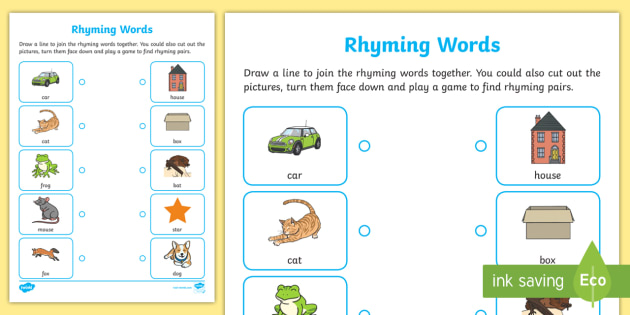 Then they will record the rhyming words on their recording sheet, giving them an opportunity to practice writing and spelling the words.
Then they will record the rhyming words on their recording sheet, giving them an opportunity to practice writing and spelling the words.
These mats include 4 different sets: CVC words, CVCe words, short vowel words, and long vowel words.
#4: Rhyming Word LaddersWord ladders are a great rhyming activity for kindergarten. This activity can be done as a whole group activity, in small groups, or during literacy centers. The first time you use this activity, I recommend doing it as a whole group activity on the big teacher whiteboard.
To begin, write a word at the bottom of the whiteboard. Have students think of a word that rhymes and write that word above it. Once they get the hang of the activity, you can have the students write the word on the board, going around the room until all students have had a turn and the ladder is complete!
This activity can easily be extended to work on phoneme substitution with rhyming words. To use the activity in this way, prompt students to change the beginning sound in the word to make a new word.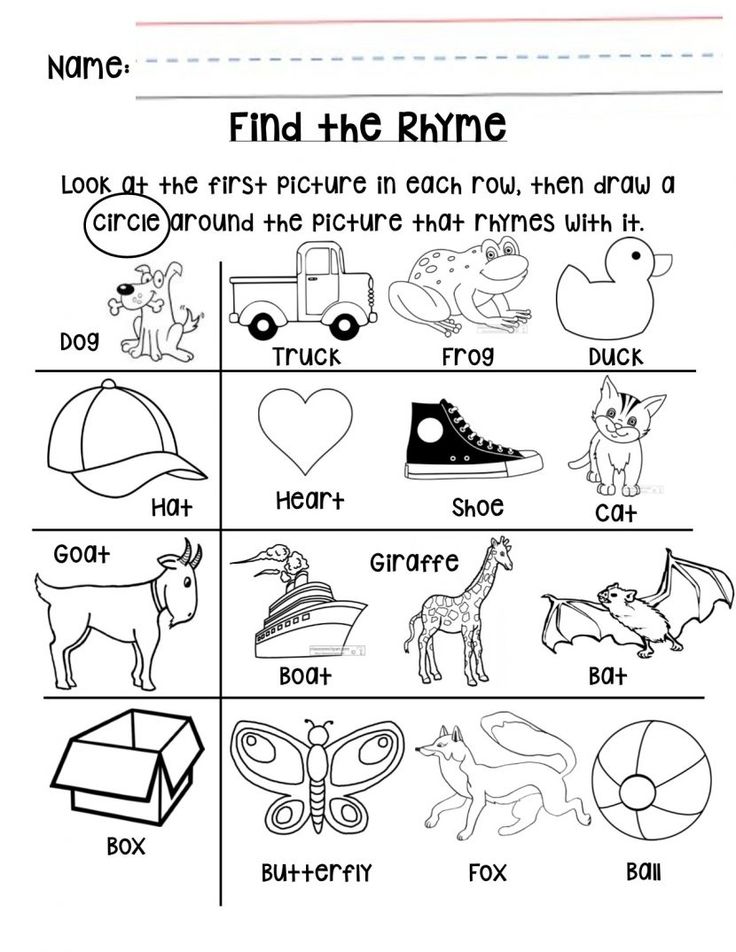 This will help them understand that even though the beginning sound changes, the ending sound stays the same.
This will help them understand that even though the beginning sound changes, the ending sound stays the same.
For example, to change the word from “bat” to “cat,” use language such as, “change the /b/ sound to a /c/ sound.”
#5: Sticky Note Rhyming
This DIY rhyming activity is super easy to prep and only requires sticky notes and either a whiteboard or piece of chart paper! Simply make columns on your whiteboard or chart paper with 1 word at the top of each.
You can make 5 columns and choose a different vowel sound for each column or you can differentiate and choose as many columns as you’d like and whichever word families you’d like. You can also draw a simple picture next to the focus word in each column as an additional visual aid for your students.
Next, write words that rhyme with each word on sticky notes. Again, you can write as many or as few words as you’d like depending on if you are using this as a small or whole group activity.
You can either pass out the sticky notes to students or have them draw a sticky note from a pile.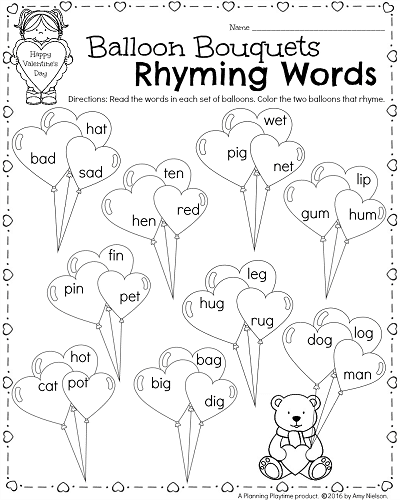 Then have them come up and place their sticky note under the correct column, matching their rhyming word to the word on the board or paper.
Then have them come up and place their sticky note under the correct column, matching their rhyming word to the word on the board or paper.
For a ton of hands-on, differentiated rhyming practice, rhyming centers take the cake! There are 8 different low-prep rhyming centers included, covering various skill levels. This allows you to differentiate to meet the needs of your students. Some students may be working on matching rhymes with “iRhyme” while others are producing rhymes with “Make a Rhyme.”
#7: Find the RhymesThis rhyming activity for kindergarten also incorporates fine motor skills, which is a double-duty activity! In a large container of rice, cereal, noodles, or another sensory material of choice, hide rhyming picture cards or rhyming word cards. Students will use jumbo tweezers to pull out the cards, working to find 2 cards that rhyme.
#8: Build a RhymeThis rhyming activity for kindergarten is super versatile and hands-on.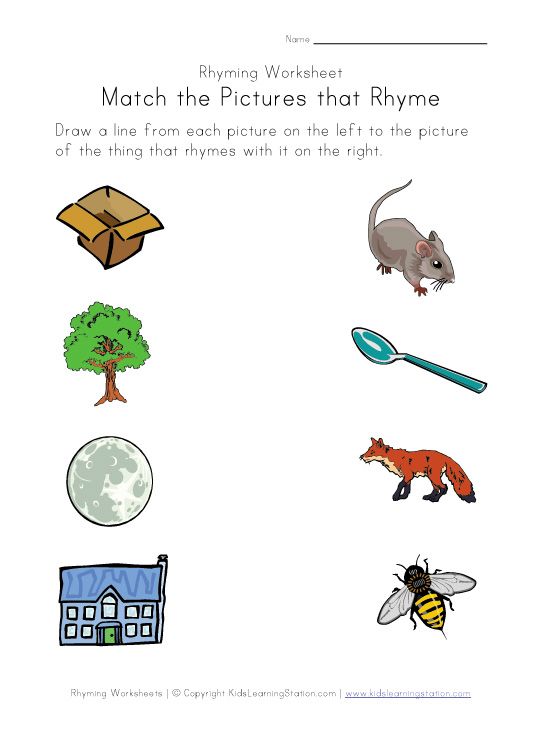 All you will need for this activity are magnetic letters or another letter manipulative of your choice. There are many ways to play.
All you will need for this activity are magnetic letters or another letter manipulative of your choice. There are many ways to play.
- Lay out a picture card and have students build a word that rhymes with it.
- Say a word and have students build a word that rhymes with it.
- Have students build 2 words that rhyme.
- Give students a word family and have them build as many words as they can with their manipulatives.
- Build the rhyming words they hear in a rhyming read aloud
Need to get your students up out of their seats and actively learning? Rhyme the room is an effective way to keep students engaged and practicing rhyming words at the same time! There are 13 different activities included in this activity bundle. They can be used around the room or at a small group or literacy center.
Students will search to find the rhyming picture around the room that matches the picture on their recording sheet.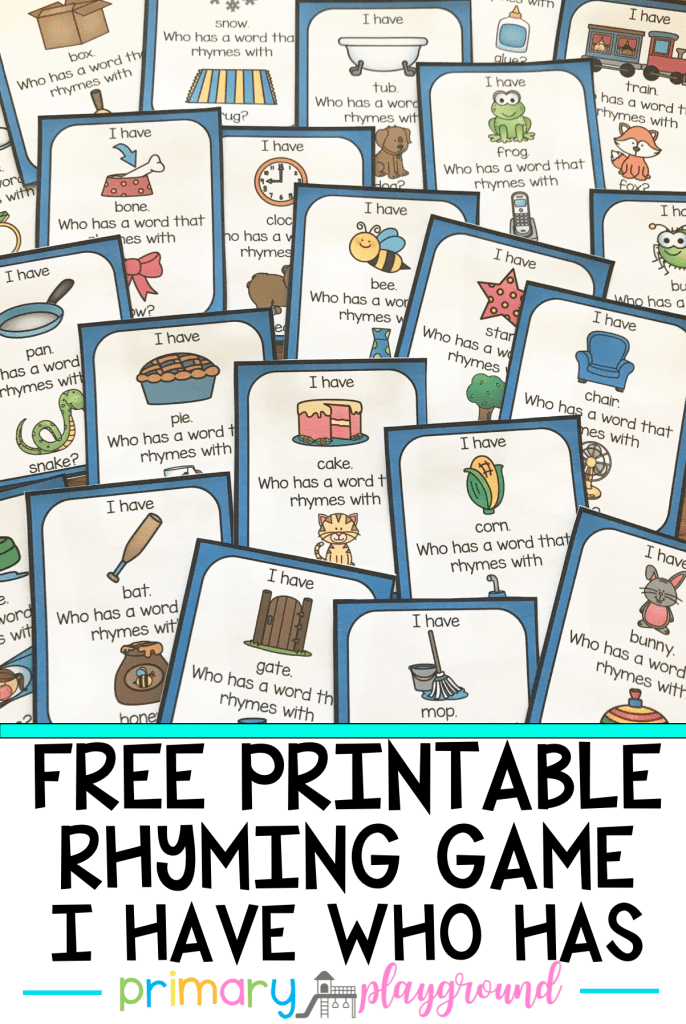 They will write the word on the picture card next to the rhyming picture on their sheet. There are options for CVC words, CVCe words, and short vowel words.
They will write the word on the picture card next to the rhyming picture on their sheet. There are options for CVC words, CVCe words, and short vowel words.
When it comes to teaching rhyming, using read alouds is one of the best ways to help students catch on to this skill! There is just something so powerful about read alouds, not only for developing a love of reading, but also for teaching skills such as rhyming!
Read alouds, nursery rhymes, and other books with a rhyming format are the perfect way for students to listen for the segments in words.
As you read, pause and talk about the rhyming words they hear in the story. It is also fun for students when the teacher pauses during reading to let them say the rhyming word that comes next! Plus, this ensures that they are on task and paying attention to the story!
Additional Rhyming Activities
Want to incorporate even more rhyming games and activities for kindergarten into your lesson plans? This rhyming bundle is jam-packed with 9 most-loved rhyming resources, including the rhyming centers, rhyming mats, and rhyme the room from above, along with 6 other resources, such as rhyming spin and cover, rhyming games, and more!
With these rhyming activities for kindergarten, your students will be rhyming masters before you know it.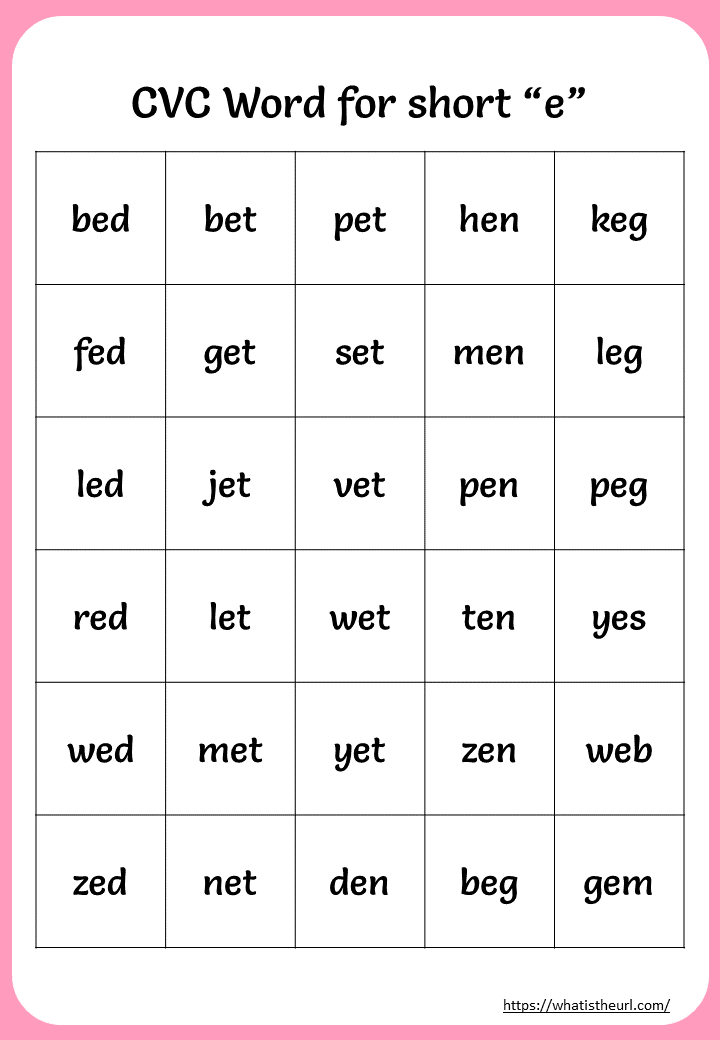 Rhyming truly is a fun concept to teach and a fun concept for students to learn. Work rhyming into your day whenever you can. That might be in the lunch line, in transition, or with these activity ideas! The more your students hear rhyming words, the faster their skills will grow!
Rhyming truly is a fun concept to teach and a fun concept for students to learn. Work rhyming into your day whenever you can. That might be in the lunch line, in transition, or with these activity ideas! The more your students hear rhyming words, the faster their skills will grow!
Learning rhymes with a child. Rhyming games for the development of children's speech
Purpose: form an idea of the rhyme
Tasks:
Clarify the concept of tongue twister.
To develop diction in children.
Introduce the concept of "rhyme".
To teach to invent the simplest rhymes for words.
Learn to work together, together, amicably.
Materials and equipment : ball, cards from the book “Speech games game library. Issue 11. We play rhymes. Games for the development of phonemic perception»
1. Speech warm-up
Dictionary exercise: pronounce intonation, highlighting the highlighted word in turn:
We are playing with words - we compose together,
We play with words - we compose together ,
Our meetings are good, we have fun from the heart!
We play with words - we compose together,
Our meetings are good , have fun from the heart!
Children with teachers remember what a tongue twister is and why it is needed. Then they, at will, pronounce any tongue twisters.
Then they, at will, pronounce any tongue twisters.
And learn new ones:
Buying a parrot,
Buy without fear:
Frightened parrots
Wake up the whole neighborhood. (Heinrich Wardenga)
There was a drama at the ball:
Noble Cavalier
From under the nose of a noble lady
Stole one eclair.
And another eclair,
And another eclair,
And one more eclair -
Here's your cavalier. (Peter Sinyavsky)
2. Speech situation
Conversation
Educator: Have you ever tried to become an echo? How does echo respond to questions? I'll ask, "What time is it now?" And is it for me?
Children: An hour! Hour!
Educator: That's right, "Hour!" That's how you are: if you become an echo, then answer the questions as it is. And to make it more fun, clap your hands when answering. The answer is two claps at the same time.
Caretaker (children)
Get ready, kids! (ra-ra)
The game is on! (ra-ra)
Don't be sorry for your hands (lei-lei)
Hand clap more fun (lei-lei)
What time is it now (hour-hour)
What time will it be in an hour (hour-hour)
And it's not true, there will be two (two-two)
Think, think, head (wah-wah)
How the rooster sings in the village (uh-uh)
Yes, not an owl, but a rooster (uh-uh)
Are you sure so (so-so)
How is it really? (how how)
What is twice two? (two-two)
My head is spinning! (wah-wah)
Is it an ear or a nose? (nose-nose)
(leader holding ear)
Or maybe some hay? (carriage-carriage)
Is that an elbow or an eye? (eye-eye)
(leader points to elbow)
But what do we have here? (us-us)
(leader points to nose)
You are always good (yes-yes)
Or only sometimes (yes-yes)
Do not get tired of answering (chat-chat) when answering “no” fine
Please be quiet (-)
Game over.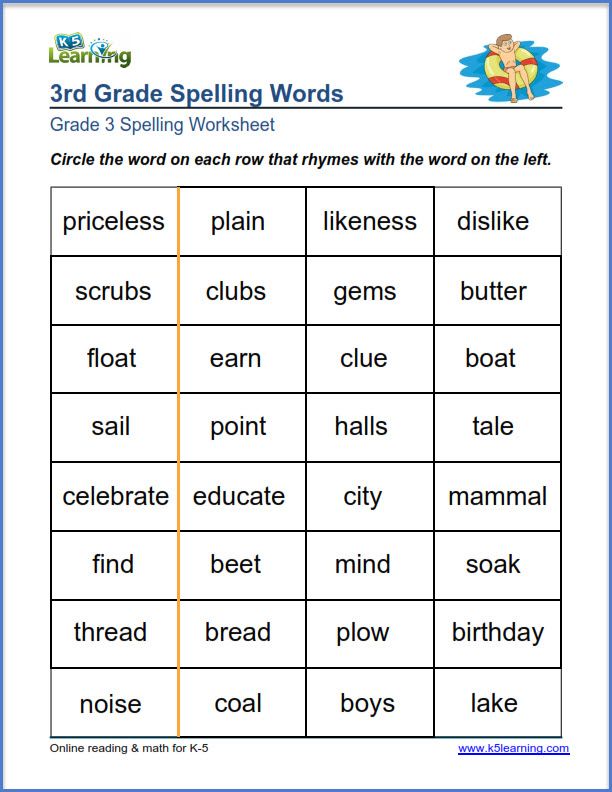 And those who have "blundered" and gave their phantom to the presenter are waiting for a fun task to be completed.
And those who have "blundered" and gave their phantom to the presenter are waiting for a fun task to be completed.
Educator: Since ancient times, people, writing proverbs, riddles, tongue twisters, have tried to decorate these works of oral folk art by rhyming the ends of lines.
Thanks to rhyme, verses are collapsible. Rhyme is when words end the same way. For example, a cat - a spoon, a bump-mouse, a spruce-strand, a rose-mimosa, a sideboard-stool, an owl-head, a river-stove, etc. These words sound like the last syllables. Such ends of words are called rhymes.
Rhyme - the consonance of the ends of poetic lines.
After that, the children find the rhyme in the poems "Firs" and "Vanechka the Shepherd"
Spruce
Fir-trees on the edge
To the top of the sky -
I listen, they are silent,
Looking at grandchildren.
And grandchildren - Christmas trees,
Fine needles -
At the forest gate
Dance. (Irina Tokmakova)
(Irina Tokmakova)
Vanechka is a shepherd
Sheep are standing in the meadow
Wool rolled into rings,
And plays for the sheep
A little man on the flute.
This is Vanya, the shepherd!
He has good hearing.
He hates the wolf too,
He won't hurt a lamb,
No matter what.
Vanya be a violinist! (Yunna Moritz)
Think of a rhyme game
Educator: Guys, I have a rhyming ball in my hands. Let's play rhyming words.
I give a word, throw a ball, and whoever catches picks up a rhyme.
Friend (bow), crow (crown), business (boldly), shed (loaf), house (gnome), sleep (ringing), pillow (frog, bun, cheesecake, toy, girlfriend), path (bast basket, potatoes , cover, okroshka), pencil (jumble, hut, gouache, mirage, crew) ...
Match-up game
Educator: Now look carefully at the pictures in front of you and find the words that rhyme with each other.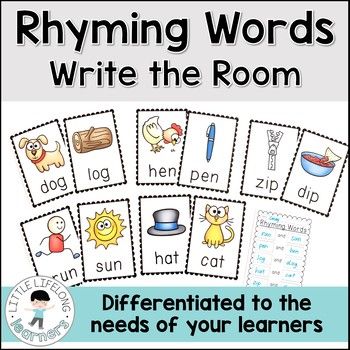
Educator: There is another game for you.
I will start poetry now
I will start and you will finish
answer in unison.
Gray wolf in dense forest
I met a red… (fox).
Where did the sparrow dine?
In the zoo with ... (animals).
A rooster with prickly hedgehog
Cut fat with a sharp ... (knife).
Not scratchy, light blue,
Hung in the bushes ... (hoarfrost).
In winter, there are apples on the branches!
Collect it quickly!
And suddenly - apples fluttered.
After all, this is ... (bullfinches).
Game "Prompt the word" based on a poem by John Ciardi.
About amazing birds
Outdoor
Passerby
I saw it yesterday.
He was carrying a box,
On drawer
Written: “Game”.
I am two blocks away
followed him
(Believe me, I'm not lying).
Finally
Asked him:
How to play
In game?
he smiled
Polite,
Then he answered me:
Sure
What is a game
You haven't met yet.
Two birds
Amazing
I have it in my box.
And if you want,
That's with you
We will play together.
And so that we
We could start
You must remember
What is dissimilar
These birds
SIMILAR TAILS.
Catch
Such funny birds -
Very hard work.
No wonder people
Smart
Their rhymes
Name.
Indeed,
Nimble birds
From the large box
Suddenly started
Pull out
Top
Behind the word, the word.
One got
The word NAIL,
Other immediately -
GUEST and CANE.
One got
Word SAD,
Another phrase:
LET IT GO!
One got
Word ELEPHANT,
Around the age of 4-5, children discover that many words sound coherent and rhyme with each other. Speech games, including rhymes, not only teach writing techniques, but also replenish the active vocabulary.
In addition, it is very fun to rhyme in one line or even a poetic work of words that are not related in meaning! After all, you can make sense. For example, what does “cat” have to do with it when we said “spoon”? This is how funny poems are born...
Play rhyming with your children. And we will suggest some simple but exciting games for given rhymes.
“Secret transmission”. Pick up the ball and agree with the child that you are scouts. One scout passes a secret packet (ball) with a password to another. The second scout must say a response - a rhyme to the password, and then come up with his own password to transmit the secret package. You can complicate the game by connecting more participants to it, and even increasing the pace - for example, “get on your nerves”, counting out loud “one ... two ... three!”.
“Rhymes to the theme”. Prepare two jars or boxes and a few chips. Agree on what topic you are rhyming about, let's say "nature". Who remembered the rhyme - he puts a chip in his jar.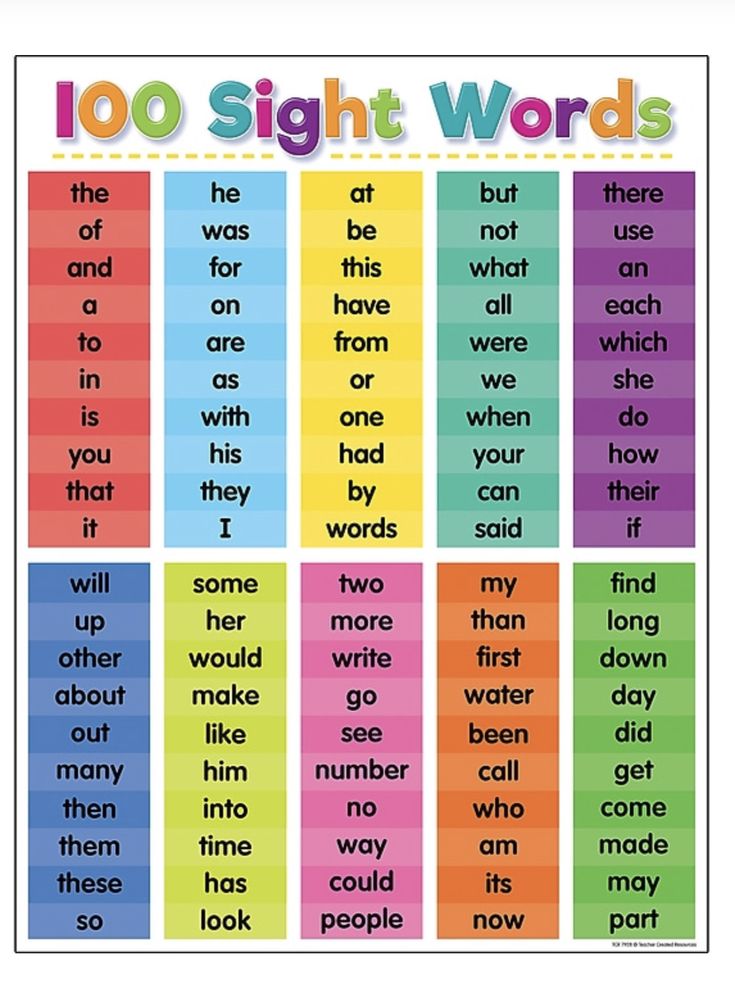 Bear-bump. Bush crunch. Who is bigger?
Bear-bump. Bush crunch. Who is bigger?
“Talking pictures”. Looking at illustrations in any books, choose pictures and come up with rhymes for them. Complicate the game: think and say a rhyme aloud, and let the child find in the picture the object for which you chose the rhyme.
“Rhyme in image”. Fantasize! Depict rhyming objects, animals, phenomena with the help of plasticine sculptures, applications, crafts. Create an exhibition of rhymes - and make riddles for your guests! For those guests who find more rhymes at your exhibition, prepare special prizes.
“Rhyme one, rhyme two, dizzy”. Come up with children with poems, the beginning of which is given only in the first line. Some rhymes for words are easy to pick up, but fitting them into the rhythm of a poem is a more difficult task. Develop along with rhyme, and your baby will never have problems with rich figurative speech!
Poems are the first literary works that children get to know. From birth, babies were always sung lullabies, told nursery rhymes, jokes.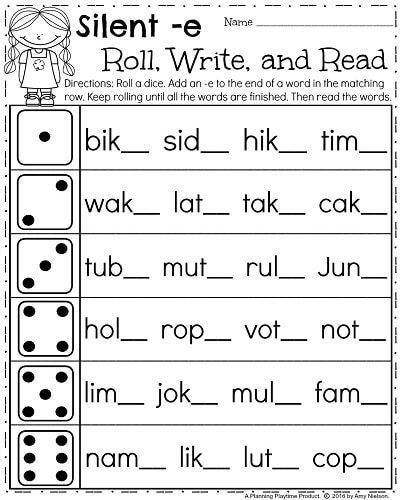 Our ancestors did not know the mechanism of the influence of poetic forms on mental development. It was intuitive. Mothers lulled newborns with lullabies and entertained them with jokes. Scientists of the 20th century proved the influence of early communications with a child on his speech development.
Our ancestors did not know the mechanism of the influence of poetic forms on mental development. It was intuitive. Mothers lulled newborns with lullabies and entertained them with jokes. Scientists of the 20th century proved the influence of early communications with a child on his speech development.
Children who were read books from birth began to talk earlier than those who were left to themselves.
He hears his mother's speech, gets used to it, eventually recognizes individual words, feels the rhythm of speech. Emotionally colored speech attracts attention.
All this is of great importance for the formation of his own speech after a short time. Rhymed nursery rhymes and jokes are perceived best. Children love rhythm and expressive reading. Words that are similar in pronunciation are easier to remember due to associative links. Parents are surprised when at an early age children immediately memorize poems. This is a very good brain training, you need to support the kids in every way to repeat, and later - to the selection of rhymes.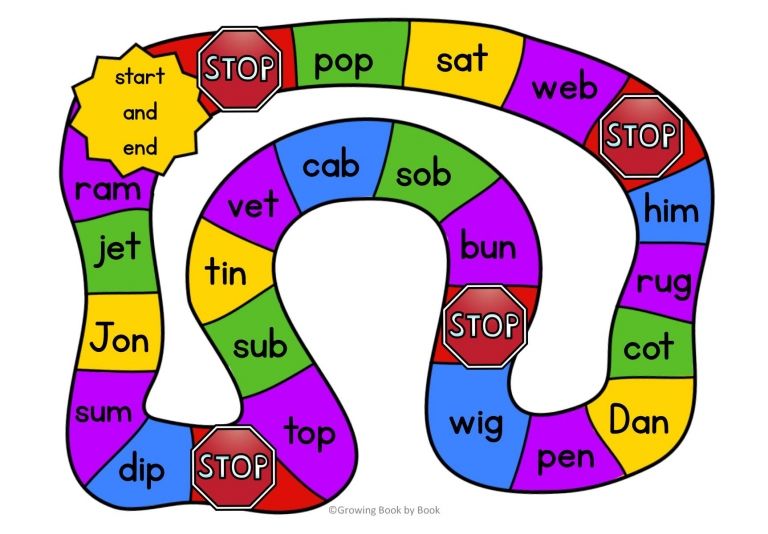 It's fun and most importantly, it's useful.
It's fun and most importantly, it's useful.
Rhymes develop phonemic awareness, auditory perception and language sense.
Rhymes for children under 3 years old
Their baby begins to distinguish from speech quite early. Reading must be accompanied by facial expressions. Rhymes should be simple: bull - barrel, cat - mouth, ball - jump .
Very useful for the formation of a sense of rhythm are such rhymes that you can choose yourself for almost any action:
- sha-sha-sha-sha-sha, the porridge was good ;
- zhu-zhu-zhu-zhu-zhu, I'm friends with the guys ;
- goo-goo-goo-goo, I'll run away quickly etc.
The meaning here is secondary, the main thing is rhythmic speech and repetitive syllables. With older children, on the basis of such “tambourines”, you can come up with games for the first versification.
Rhyme for preschool children contributes to faster memorization.
You can use short poems for educational and educational purposes.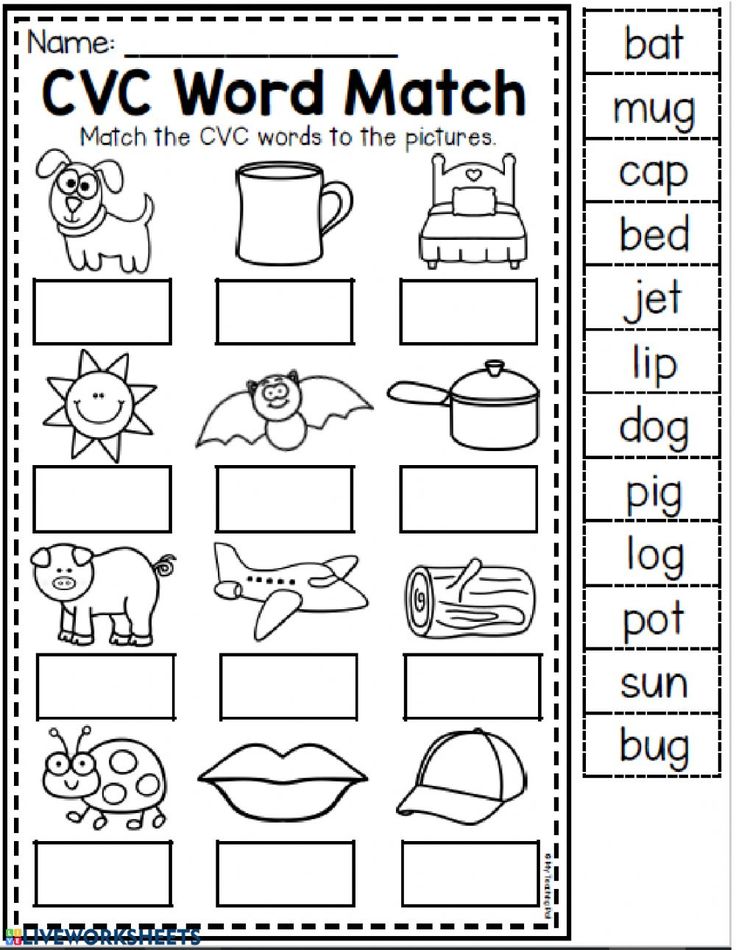 For example, learn the colors of a traffic light and their meanings, the names of animals, fruits, vegetables, etc. With the help of poetic texts, you can memorize almost any material.
For example, learn the colors of a traffic light and their meanings, the names of animals, fruits, vegetables, etc. With the help of poetic texts, you can memorize almost any material.
How to explain the concept of rhyme to a child
Rhyme is a combination of the melody of words that have the same stressed vowels. In children's poems, common exact rhymes are usually used: sun - window, cat - mouth, bridge - growth , etc. More complex, original rhymes are found in older poetry.
Types of rhymes
- Men's. The stress falls on the last syllable (home - young) .
- Women's. The stress is on the penultimate syllable (gold - rich) .
- Dactylic. The stress falls on the third syllable from the end of the word (pothole - hollow) .
- Hyperdactylic. The stress falls on the fourth or subsequent syllable (stretched - touched) .
To explain to a child what rhyme is, one can give an example familiar to many from the fairy tale “Dunno in the Sunny City”.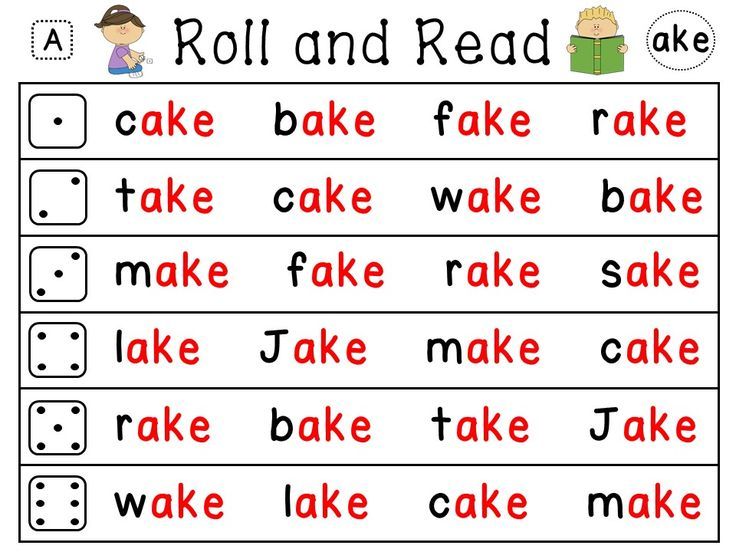
Recall that the main character decided to start writing poetry and picked up rhymes for words. The poet explained to Dunno that words should end the same way. As a result, Dunno rhymed "stick" and "herring".
Thus, it is not enough for words to have the same ending.
Definition for children! Rhyme - these are words similar in sound: Masha - porridge, nut - seagull, concrete - token and others.
Words do not have to end in the same way - the main thing is that they are combined with each other (icy - does not go) .
The sequence of teaching preschoolers to compose rhyming texts
Preschoolers from 3 to 5-6 years old have a penchant for versification. They really like the combination of words, word creation is actively manifested when children come up with their own words that are understandable only to a narrow circle of people.
Verbal experiments should never be interfered with. On the contrary, you need to support the child in finding rhymes and writing.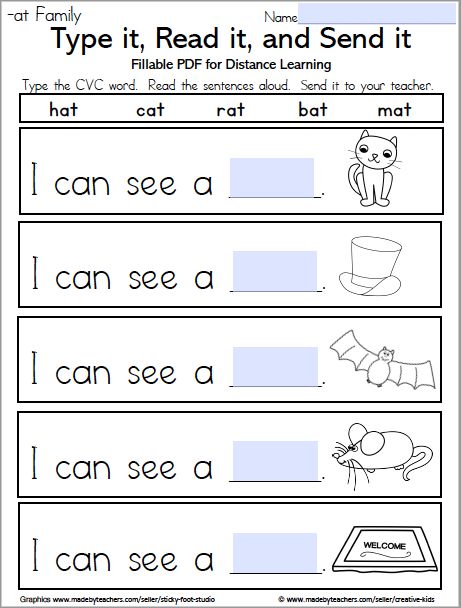 This forms a sense of the beauty of speech, the native language and develops the imagination.
This forms a sense of the beauty of speech, the native language and develops the imagination.
Formation of interest in poetic texts will help the child to better understand and perceive poetry in the future.
Stages of teaching rhyming texts to preschoolers
1. Children need to be introduced to the algorithm for creating rhyming text. First, they are introduced to the concept of rhyme and its location (at the end of the line).
An approximate algorithm that can be offered to a preschooler from 4 years old:
1) Once upon a time...
2) Who or what was their name...
3) What did you do?
4) Conclusion. Everything that can be said about the object.
The algorithm changes depending on the theme of the poem and the objectives of the lesson.
2. Creation of a simple algorithmic poem with an adult.
3. The child tries to come up with a short poetic text on his own. You can’t push a preschooler, make fun of his attempts or put too much pressure.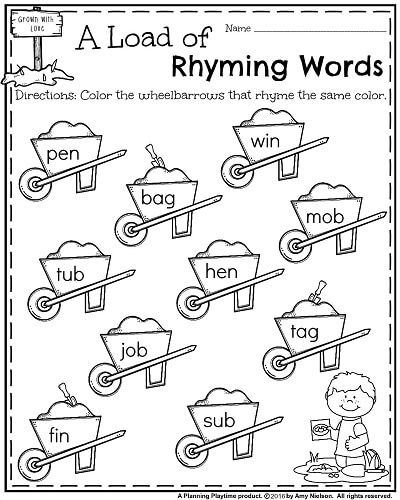 The process should captivate the baby. If he fails, an adult helps. Sooner or later, the child himself will learn to pick up rhymes.
The process should captivate the baby. If he fails, an adult helps. Sooner or later, the child himself will learn to pick up rhymes.
Burime: examples of rhymes for children
Burime - writing poems on given rhymes. This literary game appeared in France in the 17th century. Entertainment quickly gained popularity. The nobles competed with each other in wit. Now this game is undeservedly forgotten.
Classic game rules:
Rhymes must be heterogeneous;
They must not be changed;
The theme of the poem is agreed in advance.
For children, of course, the game is adapted to the age and individual abilities.
Preschoolers can be encouraged to write their own poems.
A couple of rhymes are selected, then with these words you need to come up with sentences. For example, take a pair of "nibbles - crawls" . First, the child comes up with the first sentence. Usually it turns out a simple non-common sentence like "The puppy nibbles.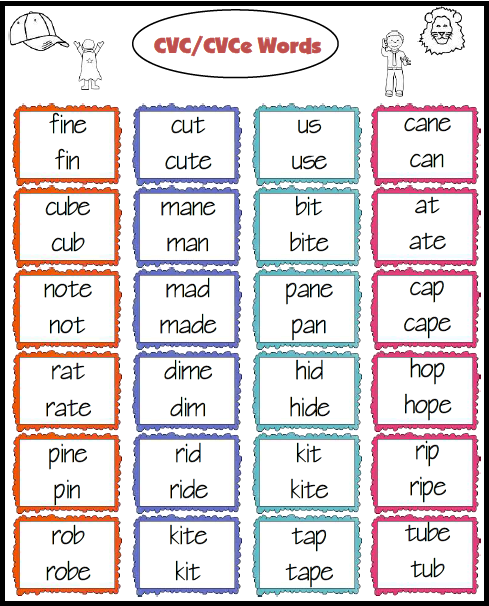 " An adult with leading questions helps to complete the sentences. Questions might be:
" An adult with leading questions helps to complete the sentences. Questions might be:
How is the puppy feeling?
What do puppies usually chew on?
Where is the puppy chewing?
Work with the second sentence continues on the same principle.
Something like this might turn out:
The gray mouse quietly crawls into its house.
A child will remember such poems of his own composition for a long time.
Rhyming games for preschoolers
Preschool children learn everything through play. Classes for the selection of rhymes can be carried out not only at home. They can be used as a leisure activity on the road, on a walk or in a long queue. This will entertain the child and help the development of speech.
Rhymes for preschool children will be a great alternative to a tablet or cartoons.
1. The pictures show objects that rhyme with each other. The child must connect them with lines.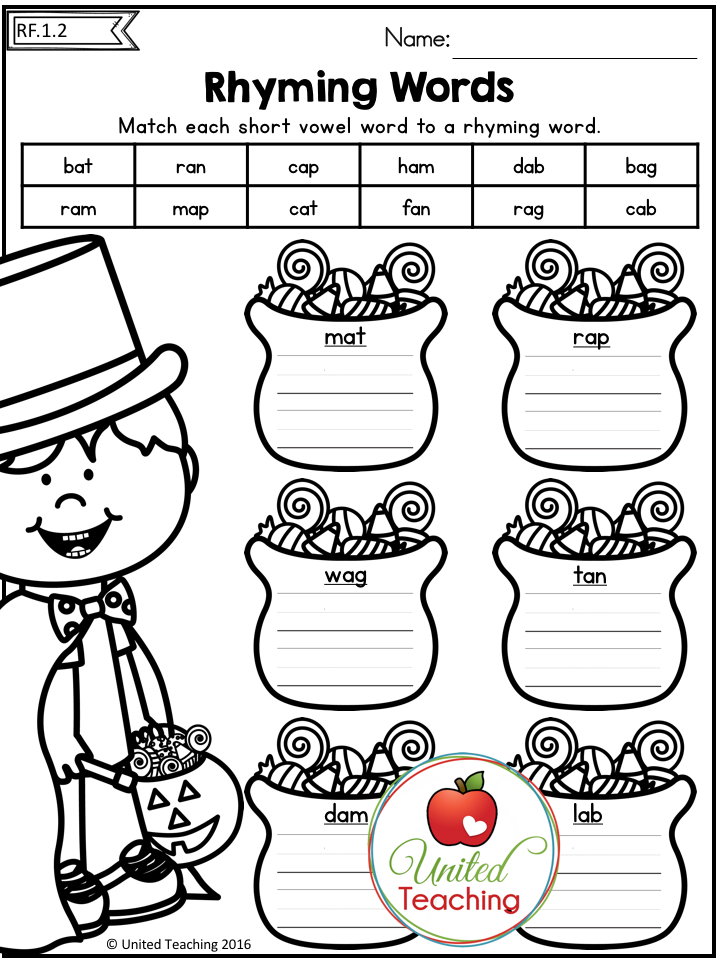 You can make these tasks yourself or purchase a ready-made manual.
You can make these tasks yourself or purchase a ready-made manual.
2. In kindergarten, and later in elementary school, funny riddles for children with answers in rhyme are widely used.
I am in a dense forest
I saw a red ... (fox).
Seeing a boy for the first time:
I ran across the clearing ... (bunny).
All girls and boys
3. The child is asked to find rhyming pairs among chains of words.
Cat, house, mouth;
Sleep, drink, whale;
Shepherd, rooster, package.
4. A game for two or more children - come up with as many rhymes as possible for a word. The word must be short and known to all participants.
5. An adult pronounces repeated syllables. It stops when the child says a rhyme. Examples:
- ha-ha-ha-ha-ha - foot ;
- ba-ba-ba-ba-ba - trumpet ;
- la-la-la-la-la - yule .
Reading children's poems and their own first poems will contribute to the development of speech in preschoolers and develop creative abilities.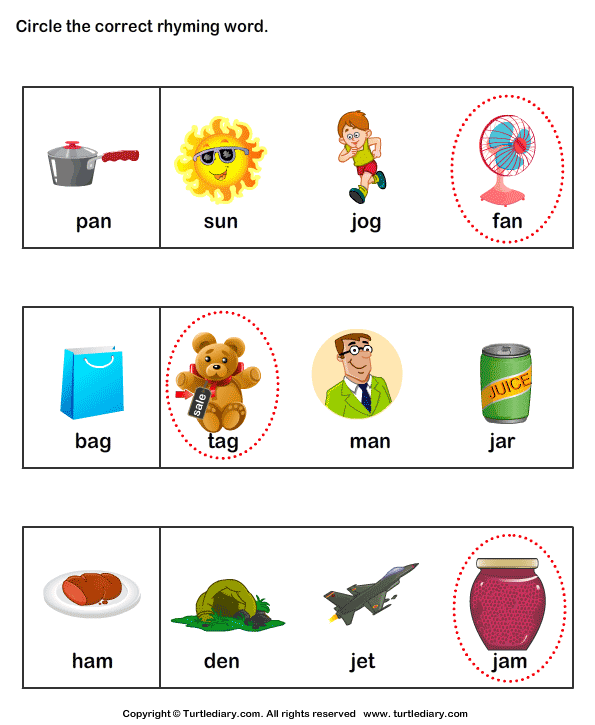
Reference:
Materials prepared by the Federal educational service "InPro" ® (License of the Ministry of Education and Science 22L01 No. 0002491). We prepare children for school throughout Russia in 40+ centers and online, including in the city. Classes in your city.
Free hotline: 8 800 250 62 49 (from 6 to 14 Moscow time).
Support the project - donate 49 rubles. via secure money transfer from Yandex:
- Vkontakte:
Academy of educational games. For children from 1 to 7 years Novikovskaya Olga Andreevna
Match the rhyme
Ask your child to help write short rhymes. Say the words of the couplet, stopping at the last word. The last rhyme word is selected together with the baby (he needs to be offered a choice of 2 words).
Where are you going, Marina?
Into the forest where the ripe…
The rhyme offers a choice of berry names: “raspberry” and “blueberry”.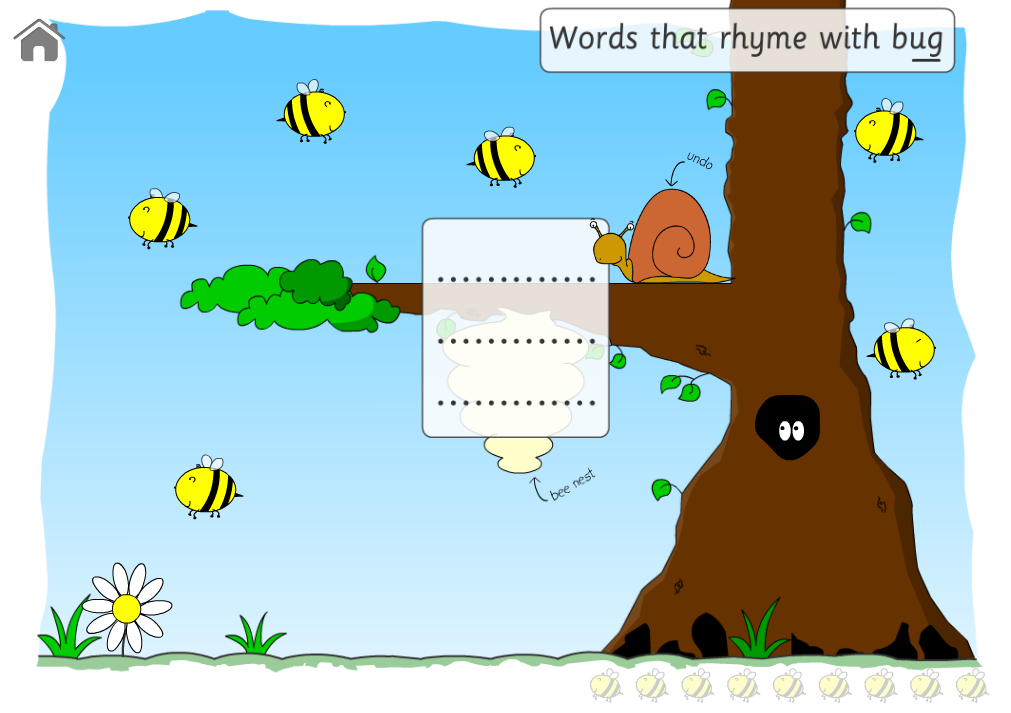 If the child finds it difficult to make a choice, then the adult pronounces a couplet first with a non-rhyming word, and then with a rhyming one, inviting the child to choose the one that sounds better. When the rhyme word is chosen, the child repeats the rhyme on his own: “Where are you in a hurry, Marina? In the forest, where ripe raspberries.
If the child finds it difficult to make a choice, then the adult pronounces a couplet first with a non-rhyming word, and then with a rhyming one, inviting the child to choose the one that sounds better. When the rhyme word is chosen, the child repeats the rhyme on his own: “Where are you in a hurry, Marina? In the forest, where ripe raspberries.
Couplet examples:
We bought a cat
For the holiday… (Bow, boots)
I sewed a shirt for a bear.
I will sew him… (Jacket, pants)
We will wash now,
Need soap, need… (Powder, basin)
My sister
Long… (Pigtails, ponytails)
On a swamp
Grew up… (Berries, mushrooms)
We visited the forest,
We saw there… (bear, fox)
sat by the window
Grey… (Cat, dog)
I have a heavy load,
I bring home… (Apples, watermelon)
I will buy you… (Pie, kalach)
Presented to a bear
Happy Birthday… (Typewriter, books)
Tears flow from Oksanka:
Her… (Skis, sleds)
The dog brought a bouquet to the goat -
She will be hearty… (Dinner, lunch)
The kitty was bitten by a fly,
And the kitty hurts .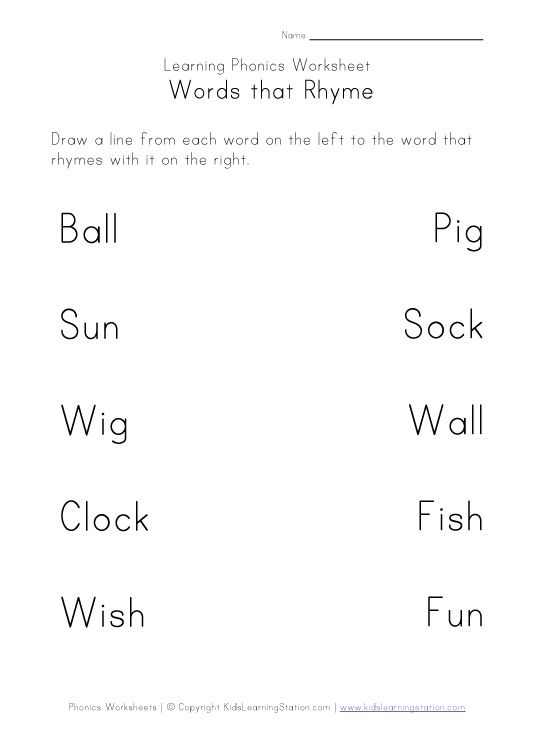 .. (paw, ear)
.. (paw, ear)
The game activates attention, develops speech hearing, teaches the child to select rhymes.
From book Encyclopedia of Early Development Methods author Rapoport Anna
Pick up the cap Slowly unscrew caps and stoppers from bottles and jars of various sizes. Show your child how to fit and screw on the lids. Then stir the lids and arrange the bottles and jars on the table. Have your child find the lids for each
From book Academy of developing games. For children from 1 to 7 years old author Novikovskaya Olga Andreevna
Match to shape Prepare three balls, three cubes, three bricks, three prisms of the same color. Arrange all these items on the table separately. Show your child how to choose only cubes among objects. At the same time, say: “This is a cube. And here's another cube. And the same cube.
From book author
Pick up cover Prepare three or four small boxes of various shapes and sizes with removable lids, for example, square, round, rectangular, triangular, oval, heart-shaped . .. Place the boxes on the table and remove the lids. Offer the child again
.. Place the boxes on the table and remove the lids. Offer the child again
Mastering the concept of rhyme by preschoolers with OHP
Purpose: the formation of children's ideas about rhyme, the development of children's speech through the use of an artistic word, through the use of poetic rhyme.
Tasks: to develop the ability to select a rhyme that is similar in meaning to a prepared quatrain, the ability of children to invent short quatrains, create a joyful mood, positive emotions, cultivate interest in poetry, poetic creativity.
Brief description: this material is intended for conducting GCD with older preschoolers and children of primary school age.
Mastering the concept of rhyme by preschoolers with OHP. Guidelines
With the development of phonemic perception, children with speech disorders, listening to the sounds of speech, comparing words according to sound patterns and finding similarities and differences in them, learn to feel the rhythm, rhyme, participate in the formation of language instinct. Their favorite exercises are game rhymes.
Their favorite exercises are game rhymes.
I bring to your attention the material that I use in my work.
Topics: “Sound [r]”; "Related Words"
Our fins would grow,
We would swim like ... (fish).
I would wave my flexible tail
And frolic like ... (fish).
Here he picks crumbs from the hook
Very small ... (fish).
Swims up, looking for food,
Large ... (fish).
"Eh. Lost my catch! -
I got angry ... (fisherman), -
The fish does not bite in any way,
It can be seen that I am bad ... (fisherman).
Almost crying from resentment,
But he sits all day ... (fishing).
The fisherman is terribly sorry,
What failed ... (fishing).
Speech therapist reads a poem, children add the sound combination TRY:
Our sister's kittens are s... ry, their paws are fast,
Their claws are sharp, their fur coats are s... ry, and their eyes are hi... ry!
"Pot of porridge" (sound automation [l])
Children pronounce the syllable LA in incomplete words.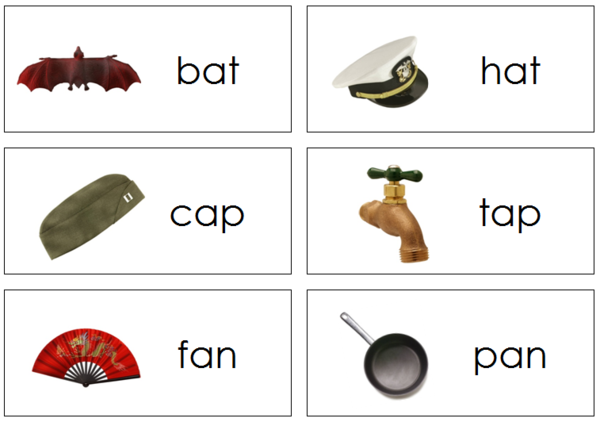
Boiling porridge in a pot..,
Hissing.., puffing..,
Lifting the lid..,
And crawling out...
With a hundred.., then with a hundred..,
corner.,
The whole apartment is occupied..,
Carefully the door is open..,
Roll down the stairs..,
Float along the way..,
Burned Masha porridge..,
Dasha porridge crawled into her mouth...
And ran into our pockets..,
Run into our sleeves...
And flow down the fingers of a hundred...
Our entire city was flooded…
Miracles! Well de...!
Rhymeball
Guys, let's play soon.
We will choose different words!
Say any words, okay?
But only such that it turns out ... (smoothly).
Speech therapist throws the ball and pronounces a word, the one who catches the ball answers with a word consonant with the name: stove - river, sheep, candle, heart, porch, ring;
bird - titmouse, match, tablet, pigtail ...
"Help and deceiver"
Rhyme can be a help. By rhyme, you can guess, for example, what kind of animal it is.
By rhyme, you can guess, for example, what kind of animal it is.
Instead of wool, the needles are all over,
The enemy of mice is prickly ...
The beast wears a horn on its nose
And is called ...
Among the animals is reputed to be a king,
He is called fearless ...
A log floats along the river.
Oh, and it's furious!
Those who fell into the river,
bite off their nose ...
Can swim all day
In ice-cold water ...
He knows a lot about sheep
Ferocious gray ...
He is lucky on himself
Own a house ...
And here are the verses with a rhyme-deceiver: one word is guessed, and the rhyme suggests a completely different one.
What the master says,
He will calmly repeat.
Ah yes voice, ah yes hearing!
What a smart girl…
Honey with raspberries is a dish
Food for...
I dig a hole day and night,
I don’t know the sun at all,
You won’t find my eyes…,
And my name is…
Underground, breaking through a hole,
Sleeping tired.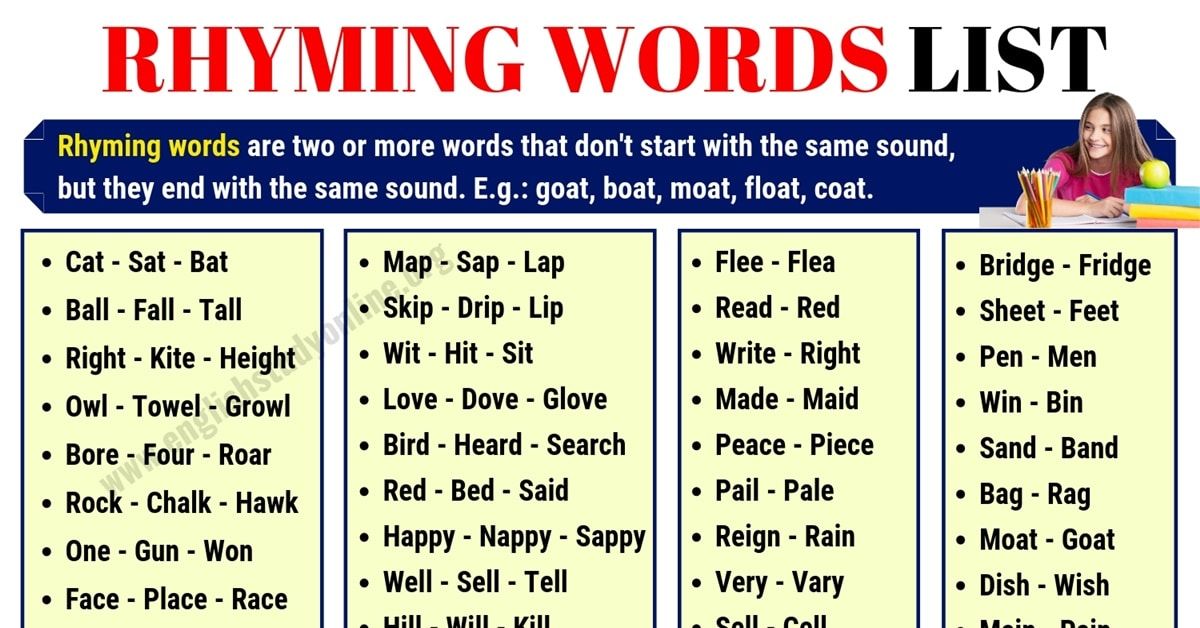 ..
..
Lives calmly, not in a hurry.
Carries a shield just in case.
On land and in water -
Everywhere she has her own,
At least three hundred years to live
Maybe ...
On two legs from all chases
The swift-footed one will rush off ...
Here, guys, miracles -
Bringing honey to the hive ...
"Rhymes"
Two stacks of paired pictures are selected for the game. Their names in the first pile rhyme with the names of the pictures in the second pile. One child takes a picture, the other finds a picture with a rhyming word.
Teaching preschoolers how to write rhyming texts | Article on the development of speech on the topic:
Teaching preschoolers to compose rhyming texts
Mansurova Yu.S.
Teacher of the senior group No. 8 "Pencils"
One of the important tasks of teaching preschoolers is the formation of coherent speech. Children of senior preschool age should be able to independently compose monologue texts of a different nature.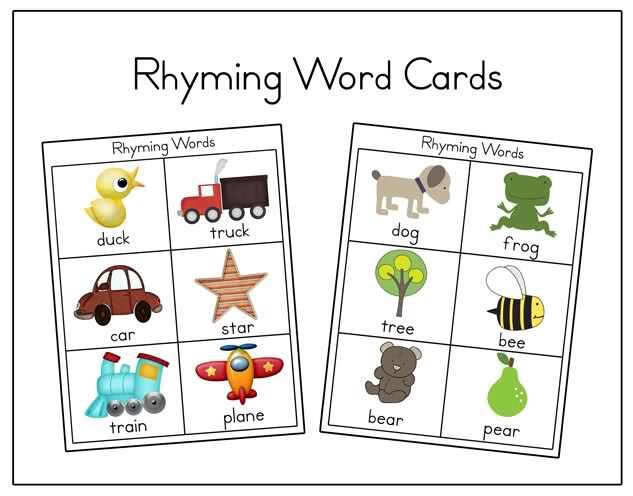 Signs of such speech are arbitrariness, expansion and coherence. In a monologue, the child constructs statements independently. He himself chooses the verbal form for expressing the content that he communicates, outlines the sequence of individual parts, links of the content. Whether it is a description of an object, phenomenon or event. It is important for the teacher: does the child own various means for expressing thoughts, are the same words and phrases repeated in one segment of speech?
Signs of such speech are arbitrariness, expansion and coherence. In a monologue, the child constructs statements independently. He himself chooses the verbal form for expressing the content that he communicates, outlines the sequence of individual parts, links of the content. Whether it is a description of an object, phenomenon or event. It is important for the teacher: does the child own various means for expressing thoughts, are the same words and phrases repeated in one segment of speech?
Such a form of monologue text as a poem contributes to the fact that children develop the ability to feel the artistic expressiveness of the word. Here the foundation is laid for the formation of love for the native language, its accuracy, accuracy, imagery. In practice, teaching preschoolers to create poetic texts, in our opinion, is given little attention. This fact is explained by the lack of effective methods and techniques for teaching children rhythm and rhyming. Without the word play that they contain, the child will not fully master his native language. After all, a rhymed text helps to express not only thoughts, but also feelings, experiences of a person.
After all, a rhymed text helps to express not only thoughts, but also feelings, experiences of a person.
L, F. Pavlenko is working on the problem of teaching children word formation, rhyming, and the selection of descriptive characteristics of an object. The teacher proved the possibility of teaching children to compose poetic texts.
Researchers of the formation of children's speech and the characteristics of its development have found that children aged 3-5 have a natural need for versification. After all, a cheerful, funny, frightening or teasing poem is a “verbal toy”. And at the same time, children's poetry is a special, peculiar only to children, view of the world, embodied in the word.
In the methodological developments devoted to familiarizing children with the poetic word, it is rightly pointed out that it is necessary to form an interest in poetic texts. At the initial stages of work, it is necessary to arouse in children an interest in works of art filled with fantasy, humor, word games in rhymes, rhythms, and onomatopoeia. How can one learn to play poetry and with poetry? Of course, they need to be read to children, memorized. Otherwise, the game will not take place. The rules of the game are in the poem itself, in its purpose and content. Everyone knows, for example, nursery rhymes, fables, counting rhymes, teasers, tongue twisters, laughter and other poetic "hype", which is considered to be empty fun. All these are primarily games that teach either the rapid pronunciation of a difficult phrase, or a complex sound combination.
How can one learn to play poetry and with poetry? Of course, they need to be read to children, memorized. Otherwise, the game will not take place. The rules of the game are in the poem itself, in its purpose and content. Everyone knows, for example, nursery rhymes, fables, counting rhymes, teasers, tongue twisters, laughter and other poetic "hype", which is considered to be empty fun. All these are primarily games that teach either the rapid pronunciation of a difficult phrase, or a complex sound combination.
The more often poems are repeated, the more riddles, jokes, onomatopoeia, shifters and other games can be seen in them. This, in turn, will help to take another step towards a new hobby - writing your own rhyming texts, and later your own poems. The acquired ability to compose is also a game and, at the same time, a reward for work. It opens the way for the child to the priceless treasures of world poetry and to his own speech creativity.
As a result of a practical study, the following stages of work were identified:
- Acquaintance of children with the algorithm for creating a short poetic text.
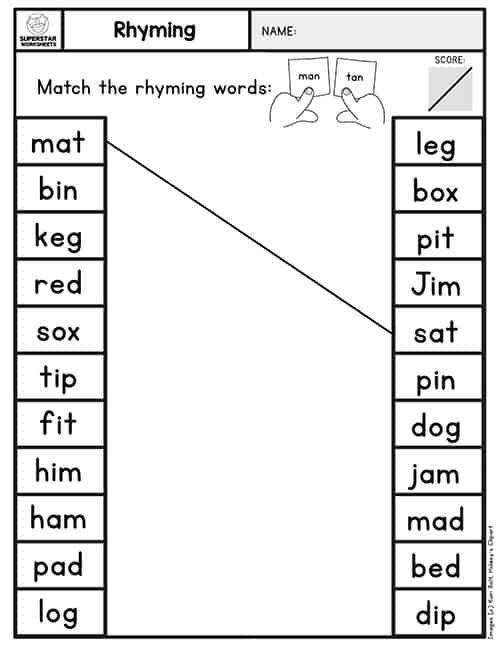
- Collective compilation of the text according to the algorithm.
- Creation of poetic texts by subgroups and small groups.
- Individual compilation of poetic texts by children.
Teaching preschoolers to create rhyming texts should start at the age of three. Researchers of children's speech found that children from 3 to 5 years old have a natural need for versification. A cheerful, funny, frightening or teasing poem is a child's verbal toy, and at the same time children's poetry.
Without the word play contained in rhyming texts, the child will not be able to master the richness of his native language. After all, a rhymed text helps to express not only thoughts, but also feelings, experiences of a person.
Problems of teaching rhyming.
Second junior group
Teach children to find words that rhyme with each other, for example: bird - titmouse, cat - mouth, etc. Encourage children to create two or three rhyming lines (semi-active stage) for objects depicted in the picture, described in fairy tales, or from the immediate environment.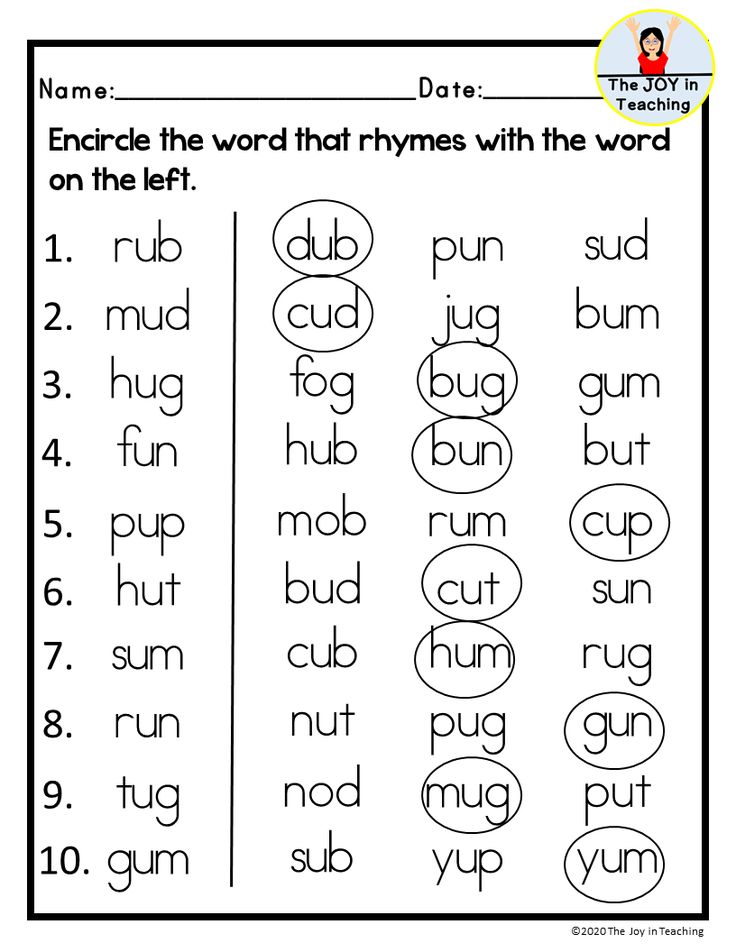
Middle group
Continue to teach children to find words that rhyme with each other and create two or three rhyming lines (active stage) according to the objects depicted in the picture, described in fairy tales, or from the immediate environment.
Encourage children to create four-line rhymes.
Senior group
Teach children to independently find nouns that rhyme with each other (laziness - stump), verbs (ran - lay), adjectives (beautiful - cute), adverbs (easy - deep). Learn to analyze the content of the poem and establish cause-and-effect relationships indicated in the text.
Preparatory group
Teach children to independently find words that rhyme with each other and create four rhyming lines based on objects depicted in the picture, described in fairy tales, or from the immediate environment. To form the ability to compose rhymes using a variety of models.
The second junior group
I started working on compiling rhyming texts in the 2nd junior group in the second half of the year.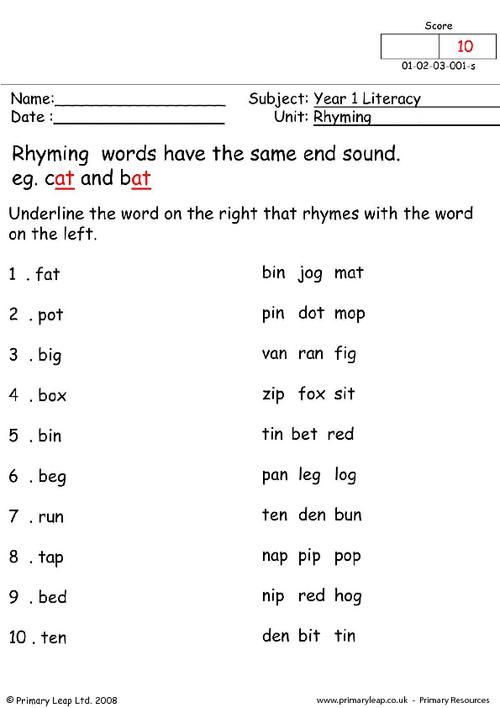 The first thing the children got acquainted with was a game called "Folding Pictures" bright, colorful, single pictures. They looked at them with pleasure. Then I suggested that each picture find a pair, (starting with 5 pairs of pictures, gradually increasing), but such that when you pronounce the picture, you get a song. We called this song rhyme. And in order to interest the child, I dressed up the doll and gave her a name - "Aunt Rhyme", who visited us throughout the year. I used games from the "Collection of methodological materials MDOU No. 242" Sadko "2004.
The first thing the children got acquainted with was a game called "Folding Pictures" bright, colorful, single pictures. They looked at them with pleasure. Then I suggested that each picture find a pair, (starting with 5 pairs of pictures, gradually increasing), but such that when you pronounce the picture, you get a song. We called this song rhyme. And in order to interest the child, I dressed up the doll and gave her a name - "Aunt Rhyme", who visited us throughout the year. I used games from the "Collection of methodological materials MDOU No. 242" Sadko "2004.
"Folding pictures"
Purpose: to teach children to match pictures of objects whose names rhyme.
Move: the teacher lays out about 40 images, the names of which rhyme. The teacher raises a picture and asks to find a pair of rhymes. The game is considered over when 20 pairs are stacked.
"Folding pictures" (Luli rings)
Purpose: to teach children how to work with Luli rings; choose rhyming words.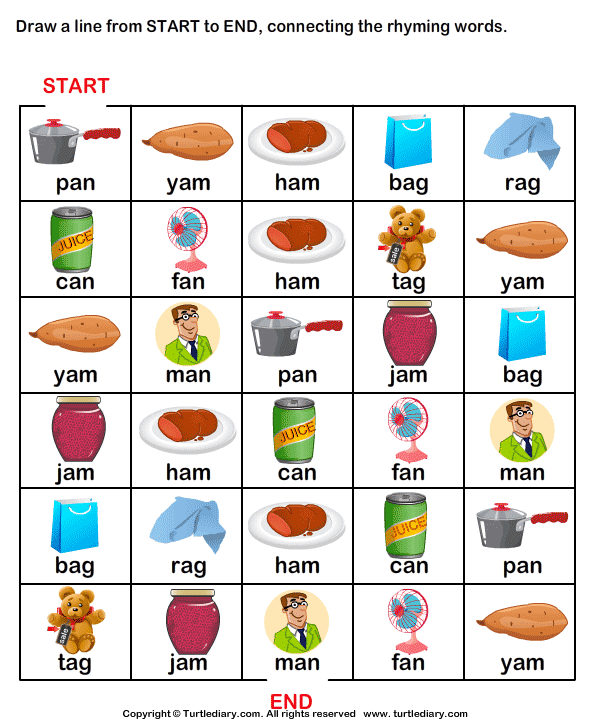
Move: On a small circle in the picture sector, and to them we will select rhyming words that are located on a large circle.
"Say a word"
Purpose: focusing on the endings of verbs and nouns, select words to rhyme.
Move: The teacher reads short passages, the children agree on the ending.
1. Bunny drums loudly.
He is a serious business ... (busy).
2. The shepherd wakes up first,
Before the shepherd gets up ... (rooster).
3. Hedgehog - the watchman of the tower -
Angry fox kneaded ... (sides).
4. Snowman - "carrot nose" -
Christmas tree to our house ... (brought it).
"Guessing riddles"
Purpose: to form the ability of children to listen, to pronounce words, picking up riddles in rhyme
Move: The teacher reads riddles, and the children guess.
1. In the summer in the swamp
you will find it,
Green frog.
Who is this? …. (frog)
(frog)
"Find a rhyme"
Purpose: To continue to learn how to create a rhyme and find similar-sounding words.
Move: We select with the children words similar in sound to one word:
Bridge - tail - toast, etc.
Bird - pizza - titmouse, etc.
Pillow - frog - tub, etc.
Then the teacher reads the quatrains and asks the children to find the words in rhyme.
There is a cat with a mustache
Wanders around the garden,
A horned goat
Follows the cat.
etc.
"Riddles - Sayings"
Purpose: To develop a sense of rhyme, to develop a vocabulary.
Move: The teacher reads riddles, the children guess them.
1. I am a little bird -
My name is .... (titmouse).
2. In winter it is like fluff, then hard,
In summer it is called .... (water).
3. You warm the whole world
And you don’t know fatigue,
You smile at the window,
And everyone calls you . ... (Sun).
... (Sun).
4. We are happy to overtake each other,
Look, my friend, don't fall!
Good then, light
Fast…. (skates). Etc.
"Who becomes who?"
Purpose: to exercise children in the selection of words to rhyme.
Move: the teacher reads a poem by A. Shibaev (“For the smallest”, “Naughty children”, “Samovar”) and the children finish the words.
Once upon a time there was a little puppy,
He grew up, however,
And now he is not a puppy,
Adult .... (dog).
A mighty giant bull,
In childhood he was ... (a calf)
A foal every day
He grew up and became ... (horse)
Abstract of the lesson for children of the younger group
Visiting Aunt Rhymes.
Program content:
- to teach children to select pictures depicting objects whose names rhyme;
- to teach children to work with Lulia rings;
- to teach children to choose rhyming words.
Organizational moment.
- The day has come.
-I will smile at you and you will smile at each other. It's good that we're all here together.
-What are our moods like? (friendly, kind, calm, joyful, affectionate).
There is a knock on the door.
- Guys, Aunt Rhyme came to visit us.
- Tell me, please, what is a rhyme? (children's answers)
- It's right when the words sound good.
- Auntie Rhyme offers to play a game called "Skladushki-okladushki".
Working at tables.
- Come here, we will play with magic rings.
- What are they called? (Rings of Lulia).
- On a small circle, in this sector of the picture, and we will select folding words for them, which are located on a large circle.
- Look at the picture, who do we see? (Frog).
- And now let's pick a rhyme for the word frog.
Physical education minute.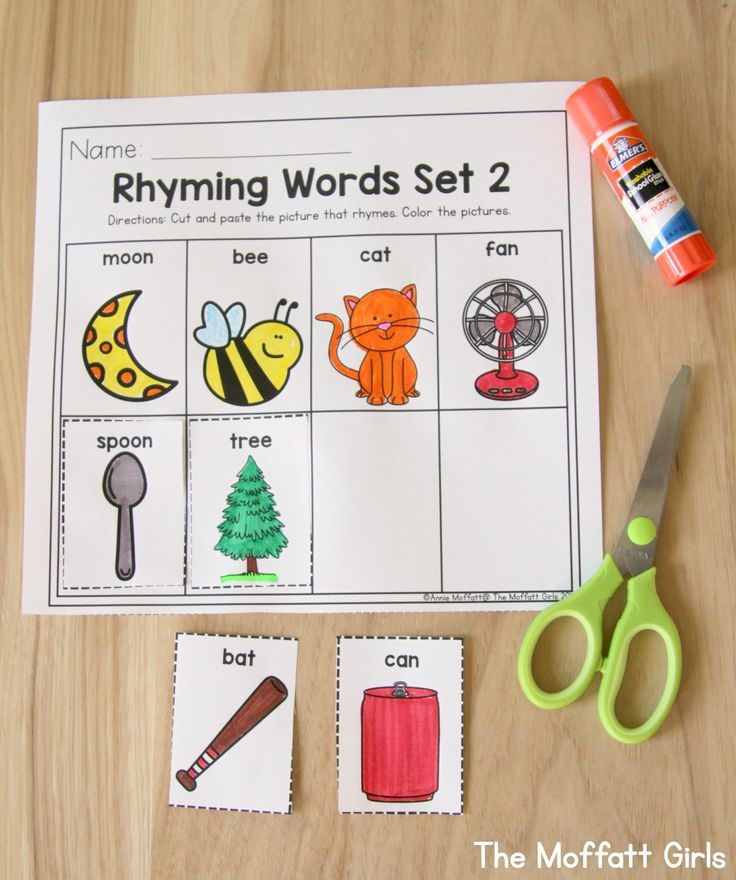
- The next game is called Say a Word.
- I will read the sentence and you will finish it.
- Elephant with a trunk like a shower,
Washes the back, washes ... (ears).
- We baked from flour,
with onions, meat .... (pies).
- Without a key, you believe me,
you won't open this .... (door).
- The shepherd wakes up first,
Before the shepherd gets up ... (rooster).
Result:
- Well done guys, Aunt Rhyme really enjoyed playing with you.
- Did you like it?
- Which game did you like best?
- How did we play? - Will we still play?
Middle group
The next stage of work is to create limericks. Limerick is a short poem, which consists of five lines and is written in the genre of nonsense (specified absurdity). First, limericks are created by a group of children, where the educator takes the leading role,
While compiling the limerick, the child can invent words in rhyme, but these words are not in Russian.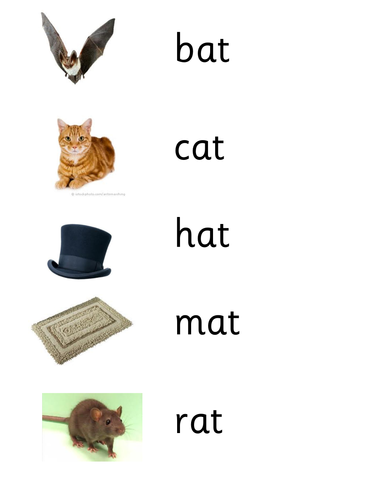 In principle, I left this invented word, but with the condition that he explains its meaning, this is also the way the children's word creativity is formed. To begin with, the child must be introduced to the rule of working with the scheme:
In principle, I left this invented word, but with the condition that he explains its meaning, this is also the way the children's word creativity is formed. To begin with, the child must be introduced to the rule of working with the scheme:
| 1 line | residents - was (object) |
| 2 Strike 9000 (Comparison or reference to a property of an object) | |
| Line 3 | What did you do? (Action or interaction with other objects) |
| 4 line | Who did you communicate with? |
| 5 line | Conclusion |
- The first and second lines of the first and second lines are rhyme among themselves;
- The third and fourth lines rhyme with each other;
- The fifth is a conclusion and may not rhyme.

For example:
There was a cat, there was a river,
Her name was midge. She was hot as a stove.
She was small, She ran in the forest,
She slept on my palm. Warmed everyone up.
This is my cat. (Vova. *0002
Used games from the younger group and supplemented
"Circles on the water"
Purpose: To develop creative imagination, find rhymes.
Move: Guys, let's play with words, what they evoke in you, what associations, what combinations you can get.
For example: "lemon"
- He .... (sour, yellow…)
- It is related to the L-word (fox, moon, spoon, etc.)
- it rhymes with …
lemon - loaf, lemon - balloon, lemon - law, lemon - bud.
Abstract of the middle group
Visiting Lesovichka.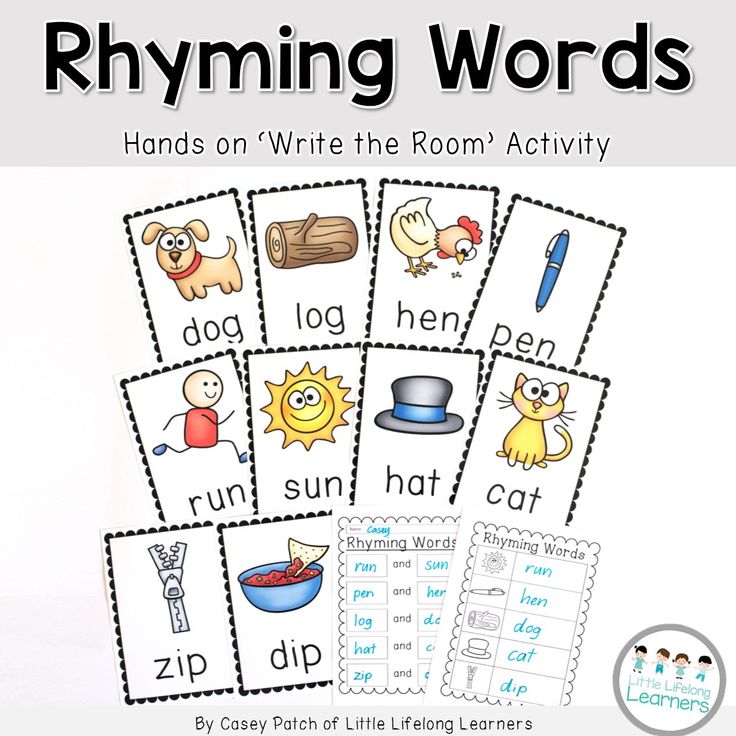
Program content:
- to consolidate the ability of children to select a rhyme for a given word;
- to develop the ability of children to analyze the content of the poem;
- to consolidate the ability of children to select rhyming words;
- to consolidate the ability to select words that are opposite in meaning.
Activity:
- Let's join hands, look at each other, smile.
- Guys, I suggest you play a game called "Teremok". The one who picks up a rhyme for a given word will sit in my teremok.
Game "Teremok".
There is a teremok in the field, it is neither low nor high. The one who picks up a rhyme for the word pillow - frog, summer - candy, dot - lobe, potato - midge, egg - ring, window - grain, flower - sock, jacket - duck, crow - crown, spoon - earring
- Guys, a magical old man - Lesovichek will come to visit us today. Do you want to get to know him?
(Lesovichek enters).
- Hello sad guys!
- Hello lazy guys!
- Hello dirty guys!
- Hello evil guys!
- Well, what kind of dunno are sitting here!
V.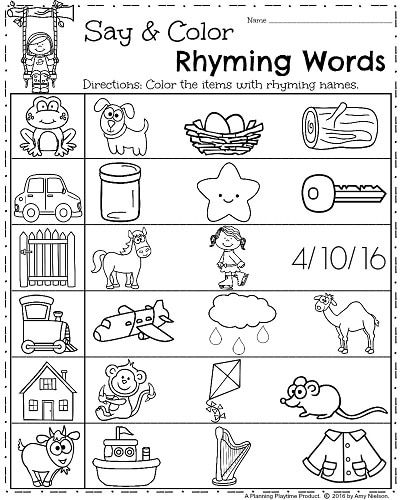 - Not true Lesovichek, the guys learn everything from us and can even tell you something, somewhere.
- Not true Lesovichek, the guys learn everything from us and can even tell you something, somewhere.
Guys, let Lesovichka read a poem about him.
An old old man lives in a forest, in a forest
He has a beautiful cap on him
He dances a hopachok,
Here is such a beautiful old Lesovichek.
Physical education minute.
Game "About whom, about what?"
- Guys, what object are we talking about?
- What sign is our object endowed with?
- What actions did you perform?
- How did the author describe him?
- The guys in this poem hid rhymes.
L.- Rhyme? And what is it? What is it eaten with?
- Guys, tell Lesovichka what rhyme is. For example.
- Let's now find sonorous words in the poem.
- Guys, why do we need rhyme? To write poetry.
- Guys, let's try to compose a poem.
Compose a poem.
- What do we select first (object).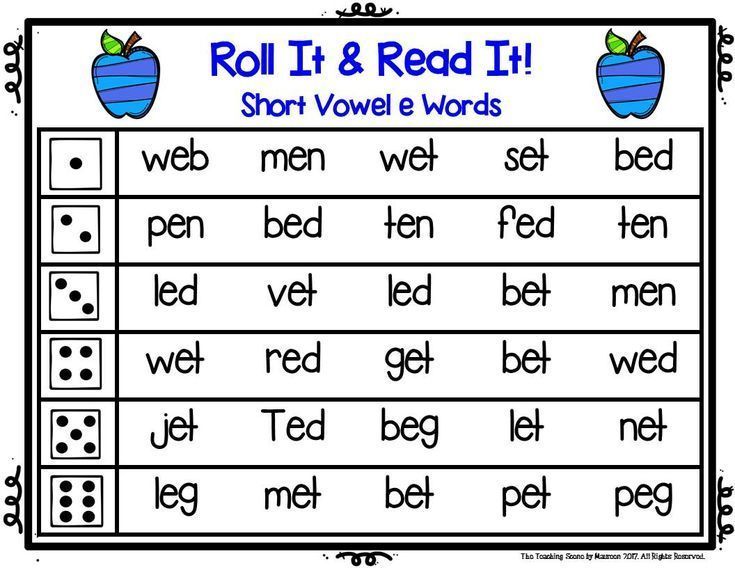
The first sentence - Once upon a time ...
- Then we need to characterize our object. What is his character.
-What actions does our object perform? What is he doing?
- What is our conclusion?
- Lesovichek, what do you have in your basket?
- I really love different pictures, so I brought them to show you
- Let's see, oh, rhymes are hidden here, let's pick them up.
L.- It's time for me to say goodbye, goodbye guys.
Total.
-It's good that Lesovichok came to visit us.
- Did you enjoy playing with him? And what did you like the most?
-Guys, are we still going to choose rhymes or is that enough?
-And compose poetry?
-I really enjoyed playing with you, goodbye.
Senior group
Rhymes improve mood, unite and organize children with their rhythm. They enliven classes, help many children overcome mental stress. Rhyming creates a sense of self-confidence in the child, develops breathing, diction, hearing, tempo, and regulation of the strength of the voice.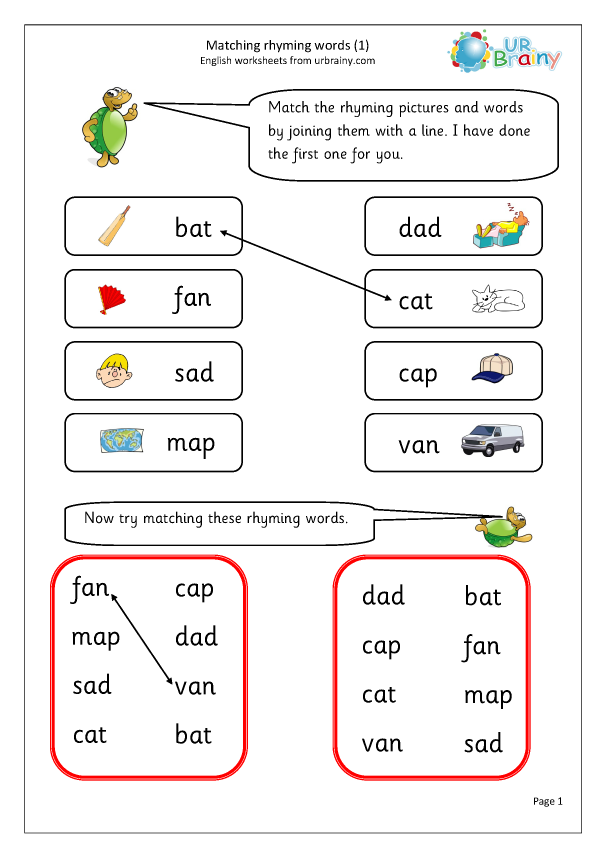 Expressive and emotional speech is formed.
Expressive and emotional speech is formed.
It also cheers up the child when parents take part in the creation of rhyming texts. The latter causes a feeling of joy and pride for them.
In order for the child not to lose interest in writing, we came up with the next stage of work.
Created a house of poetry, which allowed building poems according to the scheme. They came up with cards with the designation of a place, action, object. There can be several objects, actions, places in a poem, so the cards are numbered in order. If at the beginning of the poem the beginning begins from a place, then this is a card (No. 1). We do not put any cards on all other words, such as prepositions, conjunctions. We compose rhymed verses using the names of signs.
The rules for compiling rhyming texts have changed with increasing complexity:
1. We compose a poem from five lines.
2. The first and second lines rhyme with each other.
3. The third and fourth lines rhyme with each other.
4. The fifth line is a conclusion and it does not rhyme.
5. We compose a poem using the names of features.
6. The beginning of the poem begins the beginning, it can start from the object, and from the action, and from the place.
7. There can be several actions, objects, places in a poem.
8. —
(Figure 1. Poemage house)
For example:
lived a bird,
just like a bad house,
at the House of Flying,
grains clutch
Here is such a bird. (Snezhana Lapteva)
In this poem, the beginning lived and was composed without names and features. We substitute the names of the signs after we have composed a poem and substitute them in front of the object, place and action.
Here is a funny poem with the use of feature names:
Wet bird.
There was a wet bird,
Just like a small multi-colored one,
It flew squarely around the house,
Grains pecked sourly,
You would be dry if you didn't fly in the rain.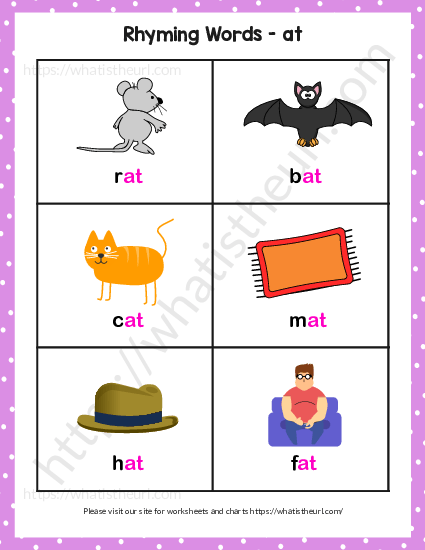 (Snezhana Lapteva)
(Snezhana Lapteva)
During the choral pronunciation of rhymes, children can make movements, which causes delight in children.
(Figure 2. Table of signs)
"Warehouse - not a warehouse"
Purpose: to learn how to choose a rhyme for a given word.
Move: the host thinks of a word, the players come up with a rhyme.
For the next stage of work, it is necessary to teach the child to select rhymes for different parts of speech: verb, noun, adjective, adverb. You can make a didactic ball. This ball will be a hint for the teacher. Stick rhymes on the ball to different parts of speech - nouns cancer - poppy, flower - sock, duck - joke, etc. Verbs: ran - lay, played - called, pushed - blinked, etc. Adjectives: beautiful - massive, egg - wheat, etc. Adverbs: wide - far, deep - high. We named this game " Rhymed ball".
"Rhyming ball"
Purpose: to teach children to independently select rhymes for different parts of speech.
Move: the teacher calls a word of a certain part of speech, the children come up with a rhyme for it.
(Figure 3. Rhymane ball)
“WITHOUT PLASS”
Purpose: To teach children to select rhyme for sound combination
Move: the driver sets a certain sound combination, and the players compose a couplet with him sa - sa - sa - flew to us ... (wasp), scha - scha - scha - we found in the grass ... (tick), etc.
"Compose further"
Purpose: to teach children to match a rhyme to a given word.
Move: the teacher reads one line of the poetic text, and the children compose further.
Read poems, encourage children who have found a rhyme in a poem. These exercises encourage further writing.
About whom? About what?
Purpose: to teach to analyze the content of the poem and establish cause-and-effect relationships indicated in the text.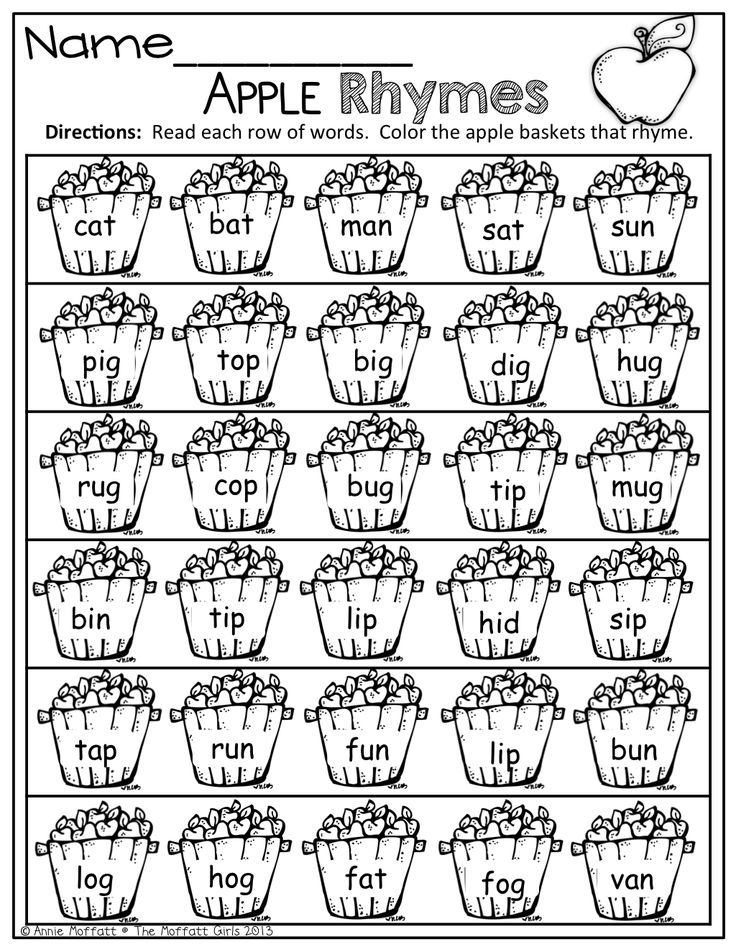
Hod: What is the object in question?
What features does the object have?
What did he do?
What conclusion did the author draw?
The work of creating rhymes became the basis for the Smile project.
Purpose of the project:
1. Development of the social and emotional sphere of children of senior preschool age.
2. Raising children to actively display emotional responsiveness to others.
3. Mastering the culture of communication with adults and peers.
1. Practical part of the project
Ø Collection of information on the project (for what reason people smile).
Ø Project planning.
Ø Compilation of file cabinets (collection of funny pictures, funny toys).
Ø Creation of the Kingdom of Smile. “Ways to improve mood” Discuss with your child how you can improve your own mood, try to come up with as many of these ways as possible (smile at yourself in the mirror, try to laugh, remember something good, do a good deed to another, draw a picture for yourself).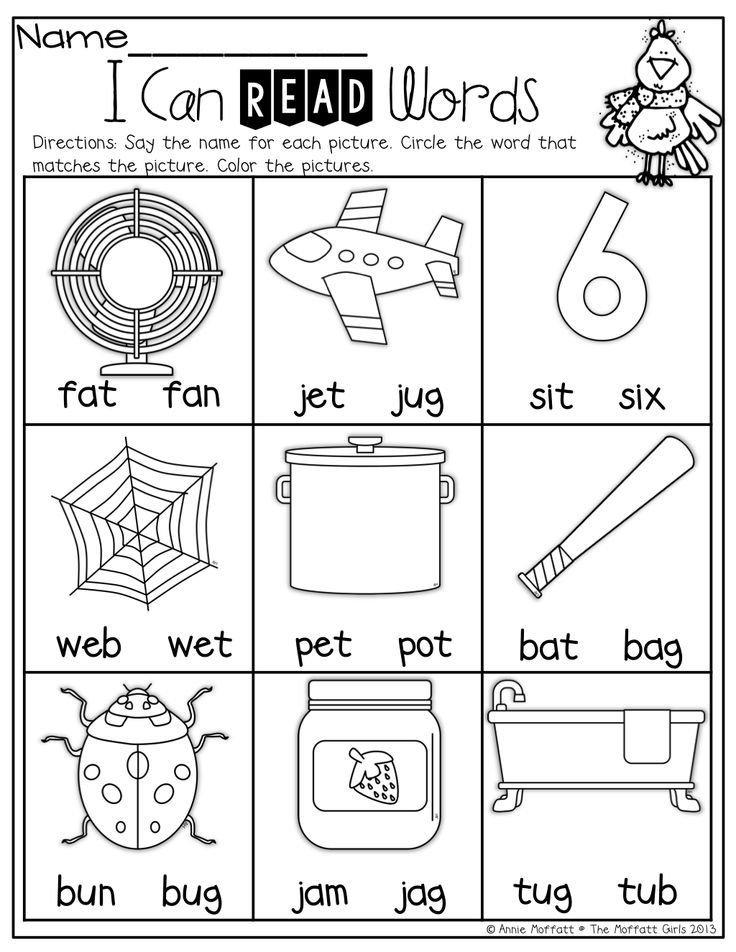
Ø Composing funny poems with the help of a poem house and designing a book of poems.
In the future, we plan to continue to compose poems based on the objects depicted in the picture, described in fairy tales and draw them on our own.
| Programs
Material: | - To consolidate the ability of children to select rhyming words for a given word; - to consolidate children's ability to compose rhyming lines for a given phrase using the names of features; Poetic house, feature table, rhyming ball. |
| Introduction. | - Guys, what do I have in my hands? (Rhymed ball) - What are we doing with it? (We play rhyming words) - I ask a word, and you choose a rhyme for it. - Let's show our guests how we play. Children match rhymes to nouns, adjectives, verbs, adverbs.
|
| The rule for composing a poem. | - Guys, why do people need rhyme? (To compose poetry). - Can we write poetry? - And what helps us to compose poems? (Poet house). - What else? (Rule for composing a poem). - Who remembers the rule for composing a poem? 1. We compose a poem from five lines. 2. The first and second rhymes with each other. 3. The third and fourth rhymes with each other. 4. The fifth line is a conclusion and it does not rhyme. 5. We compose a poem using the names of features. 6. The beginning of the poem begins the beginning, it can start from the object, and from the action, and from the place. 7. There can be several actions, objects, places in a poem. 8. — Composing a poem
|
| Reflection. | - What were we doing now? - What did we use to compose poetry? - Who did we write the poem about? - What do we conclude? - Why do we compose poems? |
Poems composed by children of the senior group "Pencils".
A prickly cat
There was a prickly cat
And she had a beautiful spoon
With this spoon she ate squarely,
And she sang sweet songs.
If you want to sing sweet songs, eat squarely. (Liza Yarashova).
A hurried car
The vein was a rough car,
Its blue tires were punctured.
She was sad,
Because without wheels, neither here nor there. (Maxim Fomichev)
***
There was a bump,
It looked like a mouse.
She grew up on a Christmas tree
She had needles,
A cone looked at us from above,
She didn't overlook anything. (Maxim Fomichev)
(Maxim Fomichev)
***
I was presented with a ring,
It looked like an egg,
It decorated a hand,
sometimes caught up with boredom,
because it was old. (Snezhana Lapteva).
***
There was a bird,
Just like a small one,
Flying around the house,
Grain pecking
Here is such a bird. (Snezhana Lapteva)
***
We have a girl in the group,
Her name is Umochka,
She has a beautiful bag,
She gives it to everyone to play,
900 (Ella Akramova).***
A mouse ran into a hole,
She held a crust in her teeth.
She will gnaw it
And she will be very lucky. (Maxim Fomichev).
***
The sun in the window,
All the time shone in the eyes.
Suddenly a wasp flew by!
Oh, it's the sun!
If it didn't shine in my eyes,
I wouldn't be bitten by a wasp.